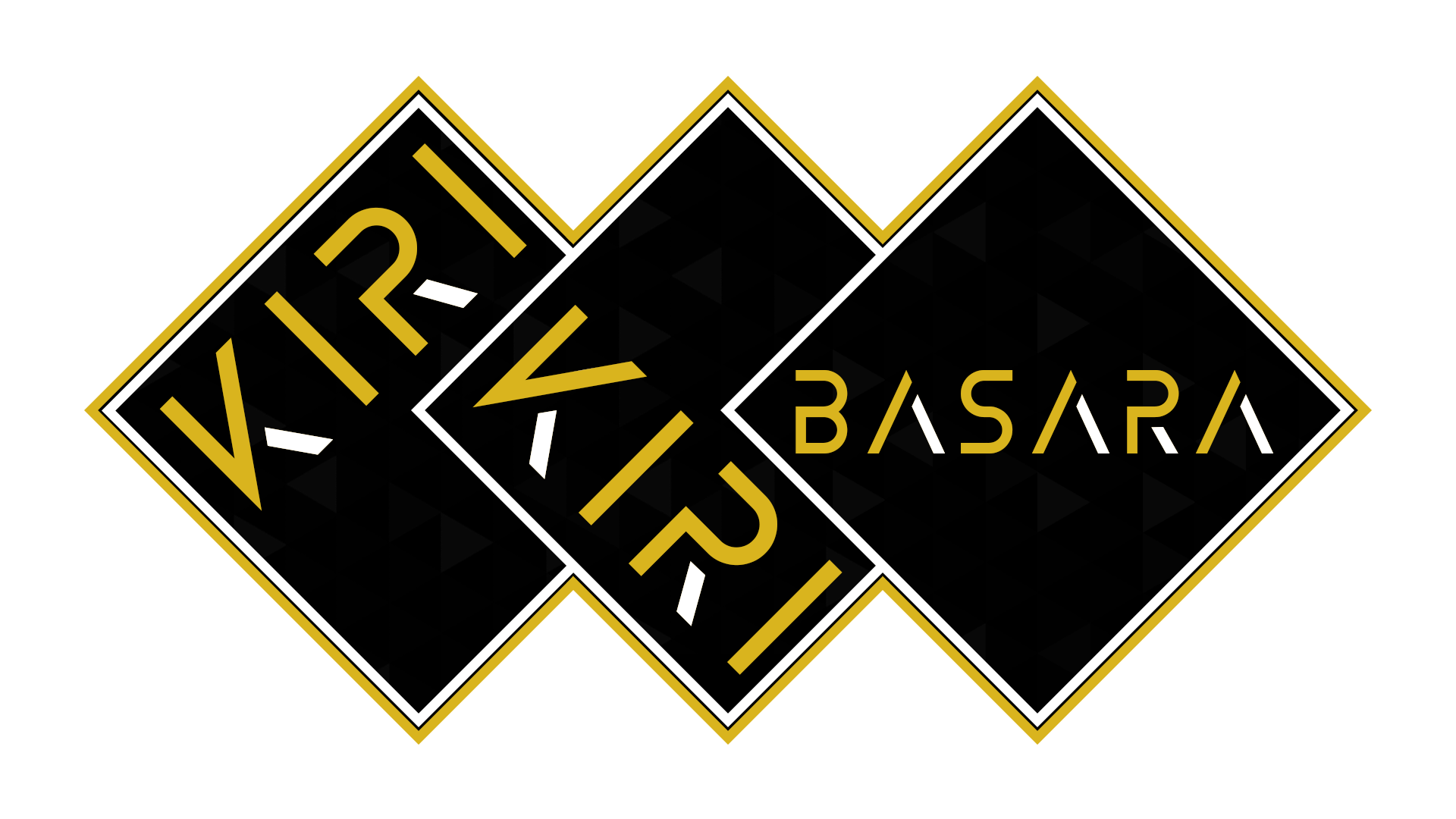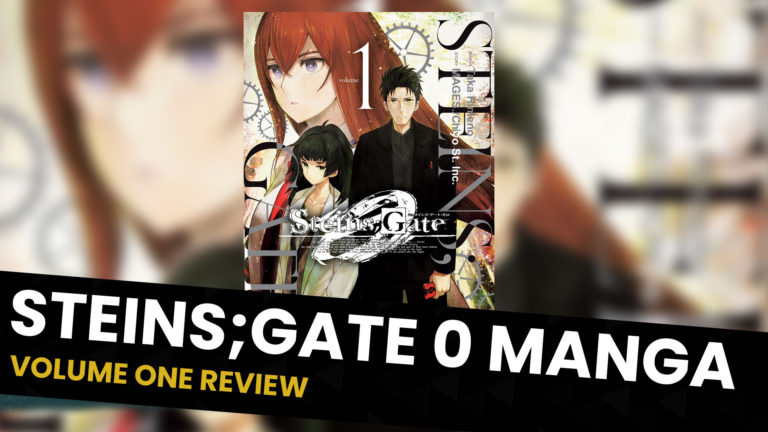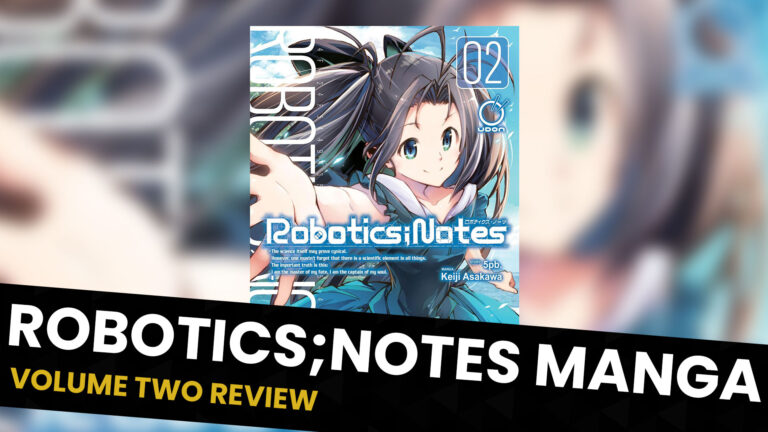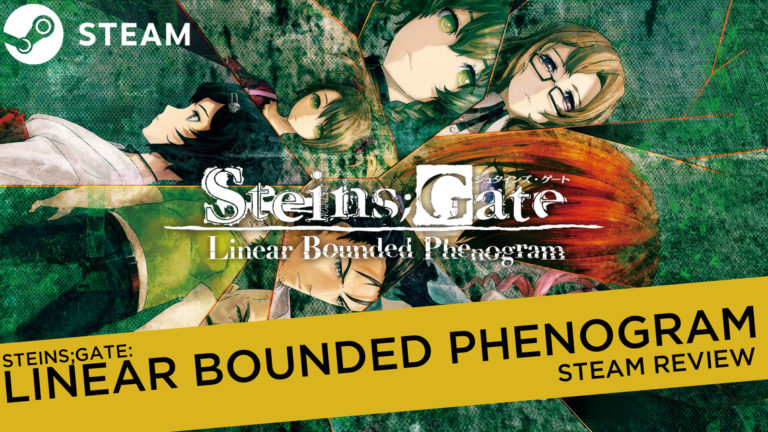It’s been a long, long time coming, but it’s finally happening: tomorrow, the first entry in the long-running Science Adventure series, Chaos;Head NoAH, will finally make its way West for the first time. It’s the sort of miracle scenario that, for the six long years I’ve followed this series, I’d only been able to conceive of in my wildest delusions.
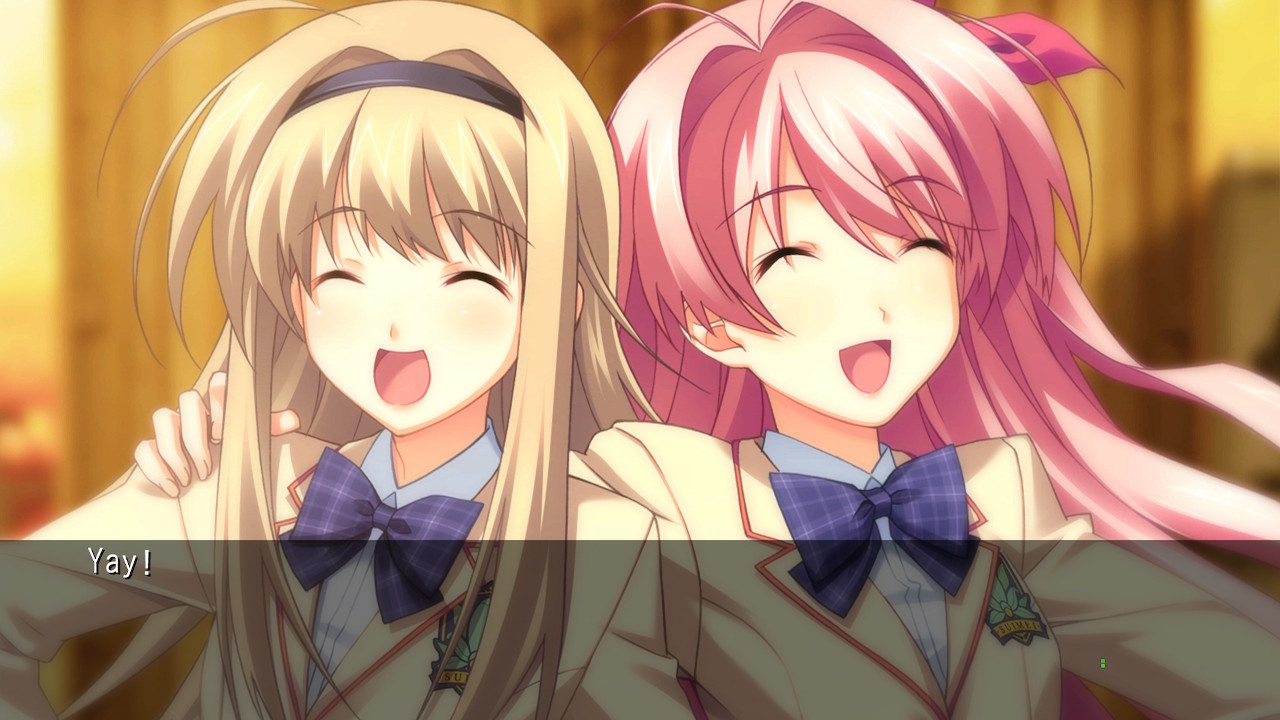
With publisher Spike Chunsoft, Inc.’s gracious support, I was able to take an early look at NoAH on the Nintendo Switch ahead of its release. Today, I’d like to sit down and share my impressions on the game.
In this review, I’ll be covering what exactly it is that makes Chaos;Head NoAH so compellingly, charmingly special. However, in addition to my commentary on NoAH’s successes, I will also discuss a number of flaws present in the Western release that I feel require consideration.
All right, then. Without further ado, let’s get right into this review!
A review copy of this game was supplied to the author by its publisher; note that this provision has not affected the opinions expressed herein in any way.
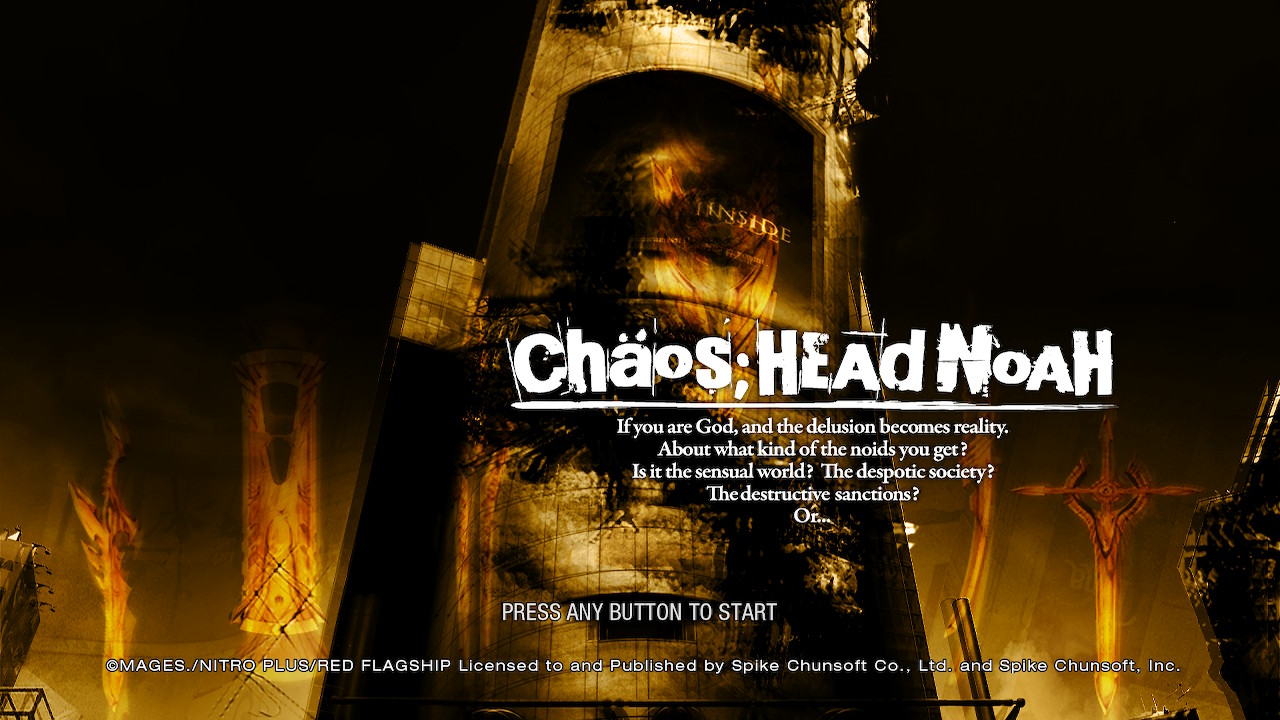
It’s hard to overstate just how powerful of a visual novel Chaos;Head NoAH can be. It is, in just about every minute of its runtime, the perfect storm of gripping narrative, compelling characters, arresting atmosphere, appealing artstyle, and charming music. This is one of those rare, special pieces of fiction that—provided it vibes with you—does everything oh-so right.
It’s plain to see that the staff behind this work of excellence fussed over every detail; whether that be the game’s pervading waves of paranoic terror, its downright chilling sound design, its visuals of powerful intricacy, or its development of inspiring, beautifully expressed themes.
But I digress. Let’s talk premise.
Enter the chaotic mind
Chaos;Head NoAH has you follow Takumi Nishijo, a high schooler who’d rather shut himself inside his container home all day to play video games and watch anime than subject himself to the real world. And honestly, who can blame him? He’s terribly antisocial and can’t hold a conversation to save his life. He is, to just about all of his classmates, a creepy otaku freak—but when he’s online, “KnightHeart,” as he goes by, is worshipped as a god in his element.
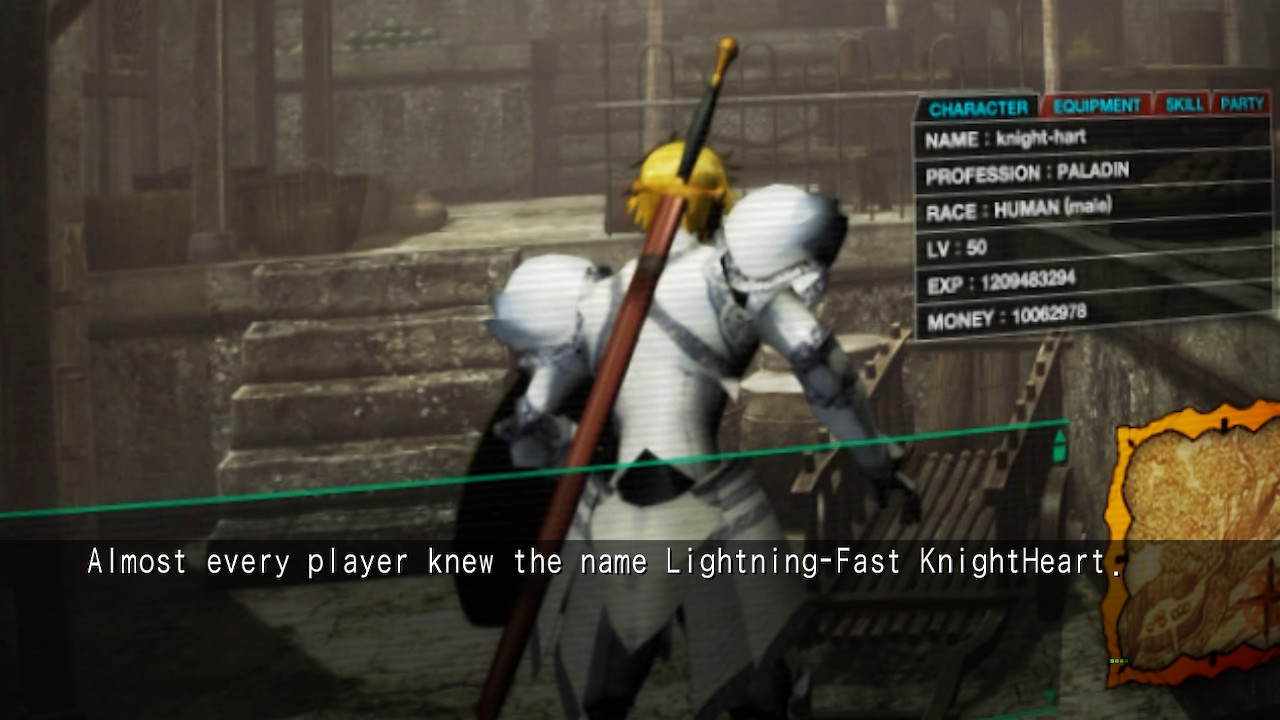
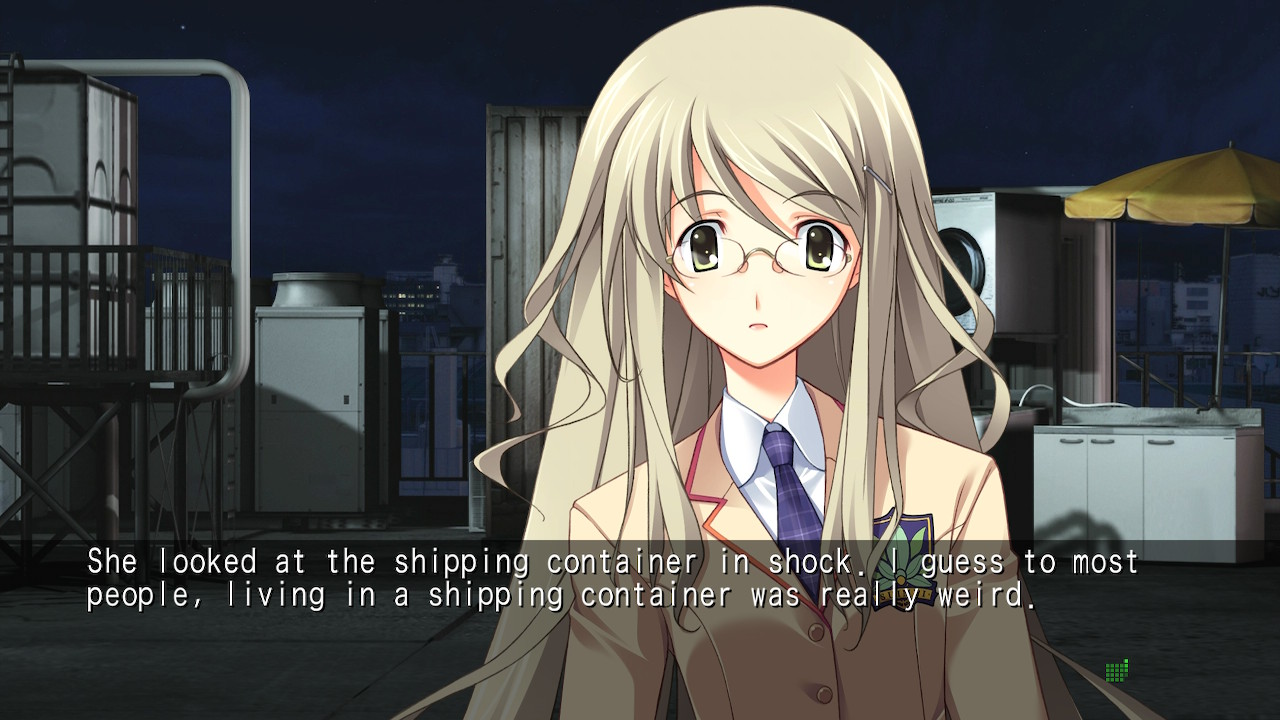
Strange happenings are afoot in Takumi’s home city, Shibuya. A bizarre spree of serial murders, popularly termed “the New Generation Madness,” has taken the populace by storm. Each killing is terrifyingly gruesome in execution, stirring up a frenzy of excitement, wonder, and terror among citizens and netizens alike.
As much as Takumi would like to hole himself up in his delusions and ignore NewGen, forces lurking in the shadows won’t let him off so easily. One day, he finds himself thrust into the midst of the madness: he personally witnesses the scene of NewGen’s third grisly murder, right as it’s being carried out by an enigmatic girl his age.
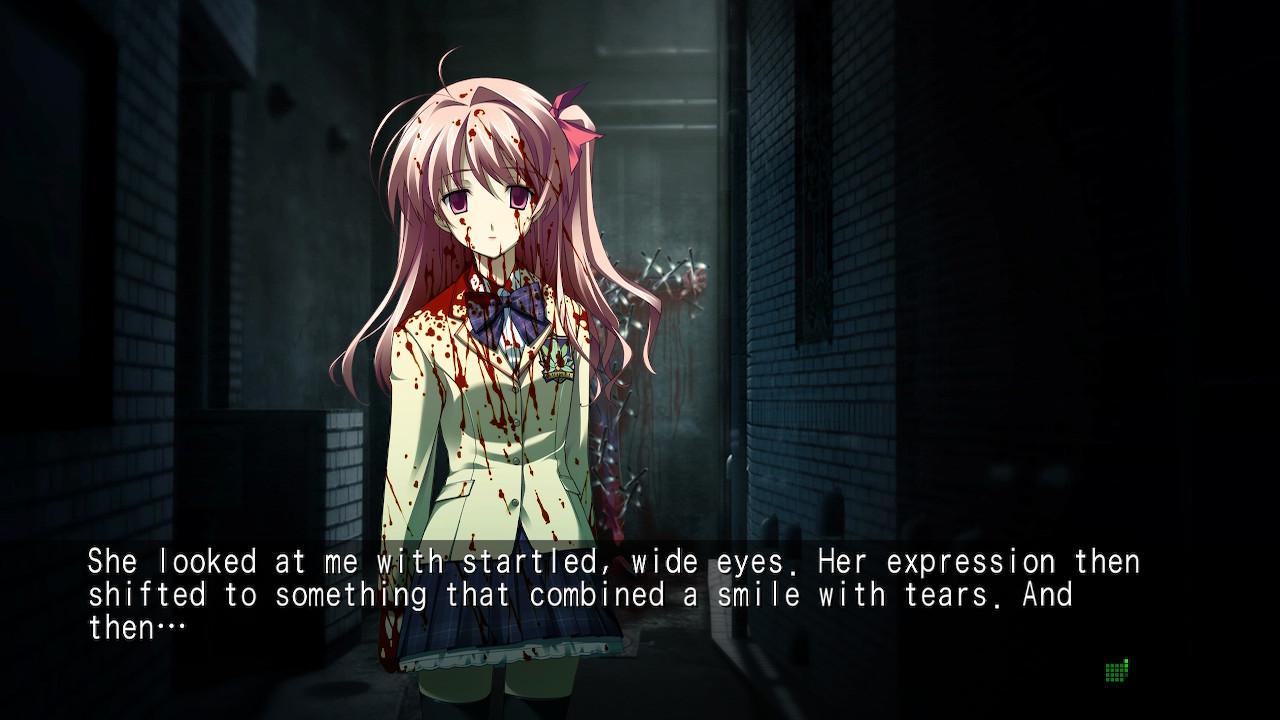
And things only escalate from there. Like it or not, Takumi is made to face reality: as the madness progresses, he is made to butt heads with allies and adversaries alike, each bearing mysterious motives; all the while, he is forced to endure attack after attack of psychological terror, all of which threaten to break him entirely.
Chaos;Head NoAH serves as the first entry in the Science Adventure series—much of what it brings to the table goes on to conceptually influence just about all other series titles, be that behind the scenes or in plain sight. For this reason, NoAH is an absolutely crucial read to any who are looking to begin their SciADV journey, or otherwise are already invested in it. Granted, for reasons I will address later in this review, this particular release may not exactly be the best jumping-in point.
Building character
NoAH features a cast of unforgettable characters, including some of the best heroines of the series: each has their own compelling backstory and human struggles that intersect with and build off of the protagonist’s in unique ways. You’d be surprised at how many different exciting directions the author manages to lead these character arcs in—all of which are guided by interactions with an introverted shut-in, at that.
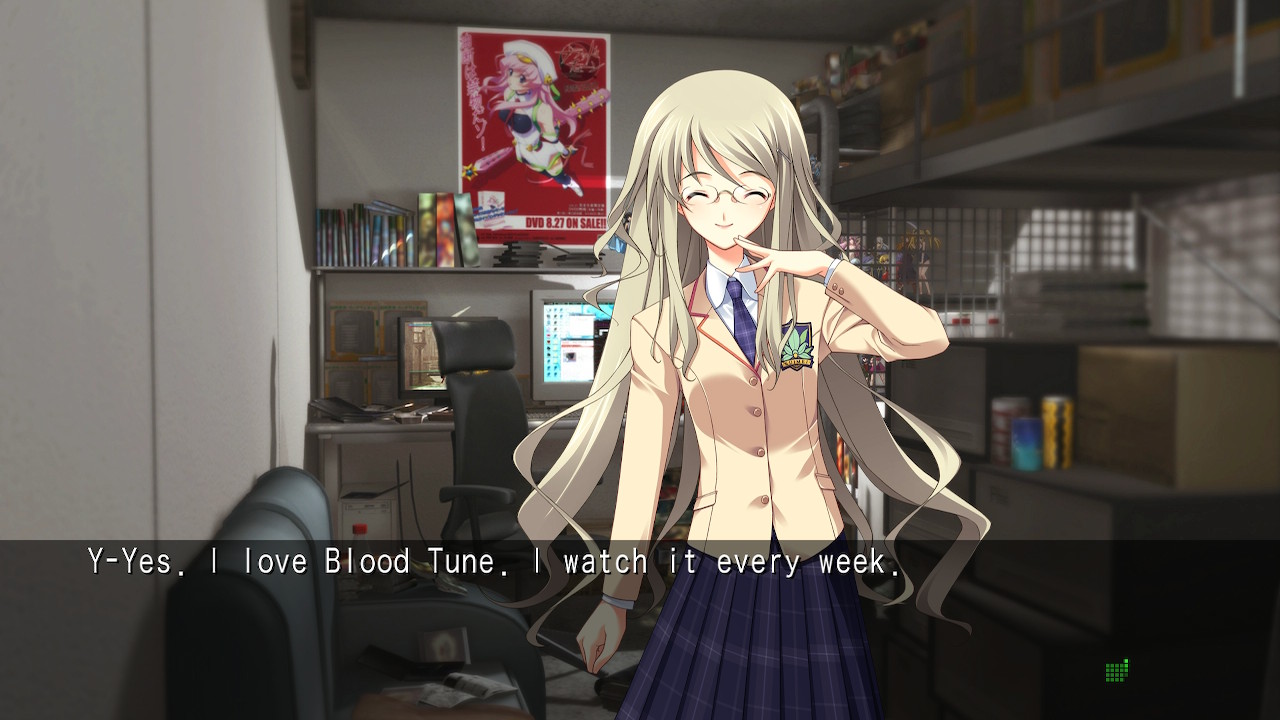
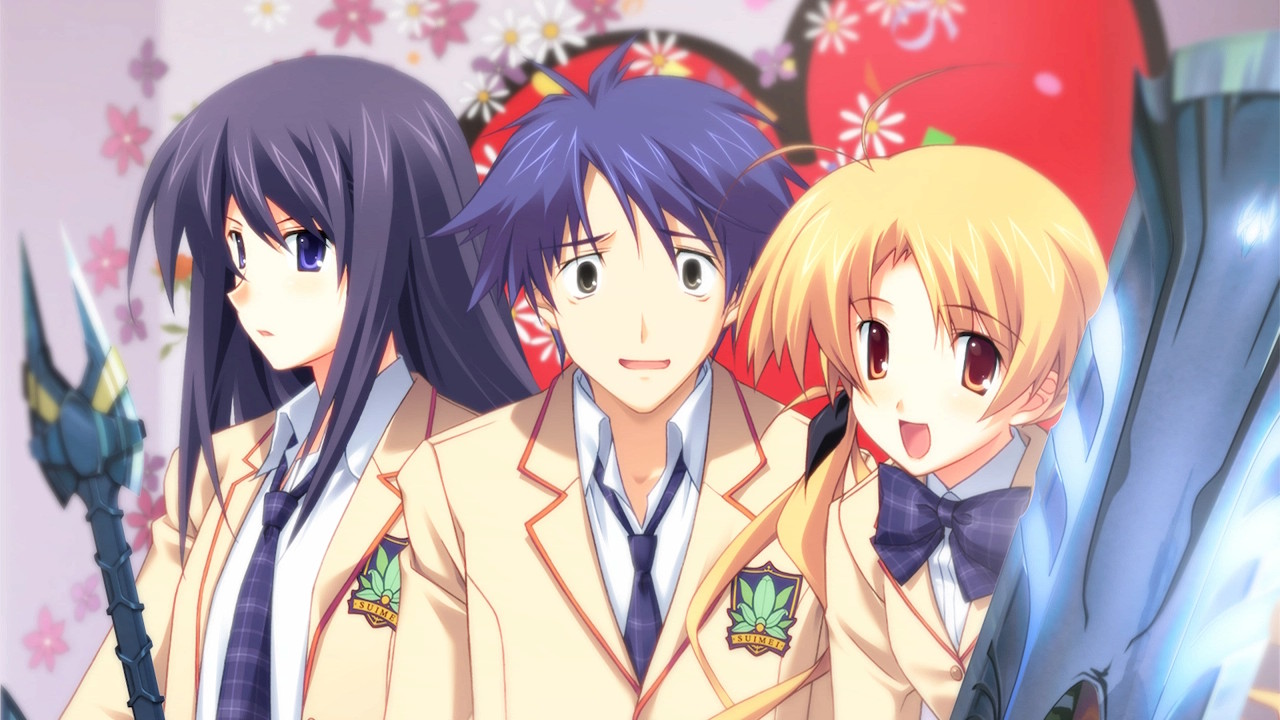
There’s something for everyone here; something you’ll resonate with, something that might mirror your own experiences. One of NoAH’s many strengths is in how varied its cast can feel—no two are alike, and everyone has something thought-provokingly special to their character.
Fans who have played the incomplete, 2008 PC release of Chaos;Head will be pleased to learn that NoAH adds six new character routes, each focusing on a different heroine. These routes introduce some much-needed and much-appreciated character development, where otherwise it may have been somewhat lacking.
NoAH’s side characters have got their own charm, too. A personal standout is Detective Ban—the endearingly easygoing detective who serves to advance the mystery plotline as Takumi desperately avoids it.
Robotics;Notes Elite may still hold the trophy for my favorite cast of characters of the series, but rest assured: Chaos;Head NoAH is no slouch here.
Captivation sublime
Atmosphere isn’t always everything, but in psychological horror fiction, it might as well be. NoAH, I’m pleased to report, is a complete and resounding success in this category. The walls are constantly closing in on Takumi throughout the story—psychic torture that may even leave the player struggling to sleep at night.
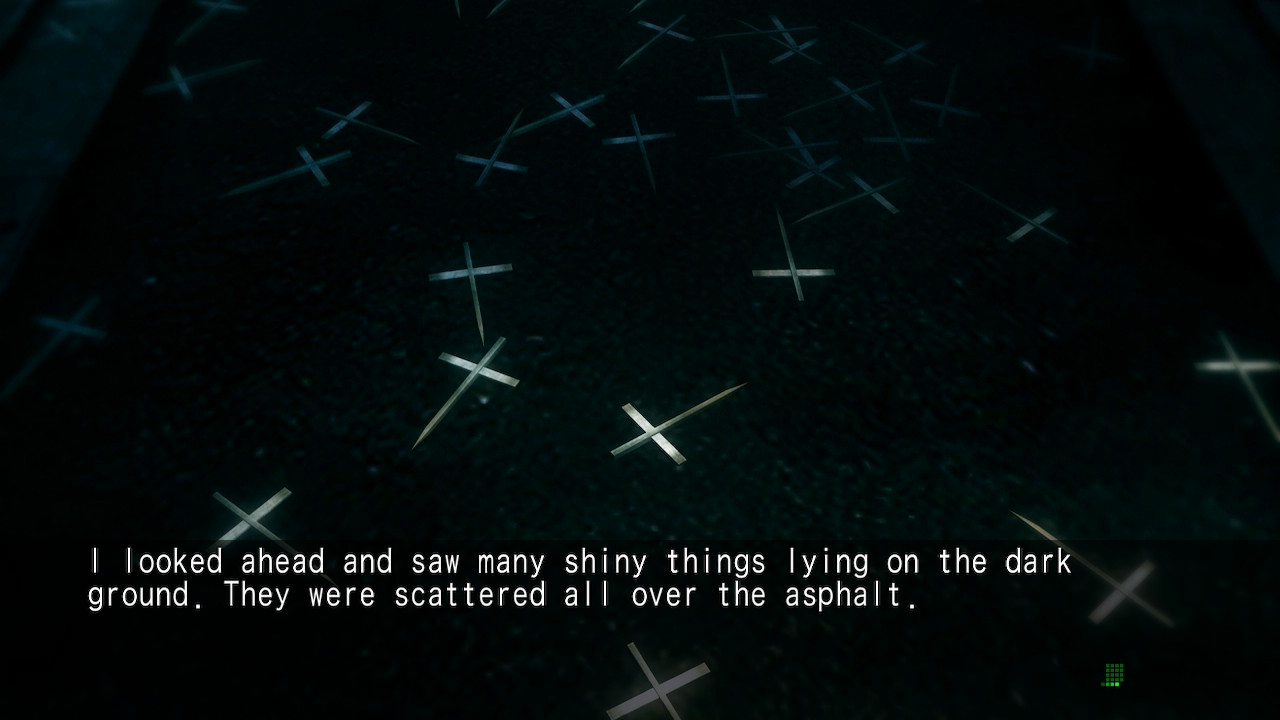

This is the sort of story that you’ll struggle to put down; the momentum it creates is so gripping, so consuming, you’ll practically be racing through some scenes, a marked anxiety within to find out what happens next.
NoAH never hesitates to present you with content that will leave you uncomfortable. Yet, you’ll watch on anyway, often flinchingly—and you’ll keep going, morbidly curious and utterly hooked. That is NoAH’s spellbinding might—downright special among other SciADV entries, and unique even amid the genre as a whole.
Nostalgic beauty
From the varied ways each character is expressed, to the mixed use of realistic detail and anime-centric shading, to the minute, cleverly used details encompassing certain visuals, it’s plainly obvious that NoAH’s art direction is masterful.
Everything is planned out: from the setting of individual scenes, to the lighting accompanying the mood, to the characters’ poses as they accentuate their personalities. What you see is a vivid reflection of what you’re experiencing—and simultaneously, what you see is the core of the game’s very identity.
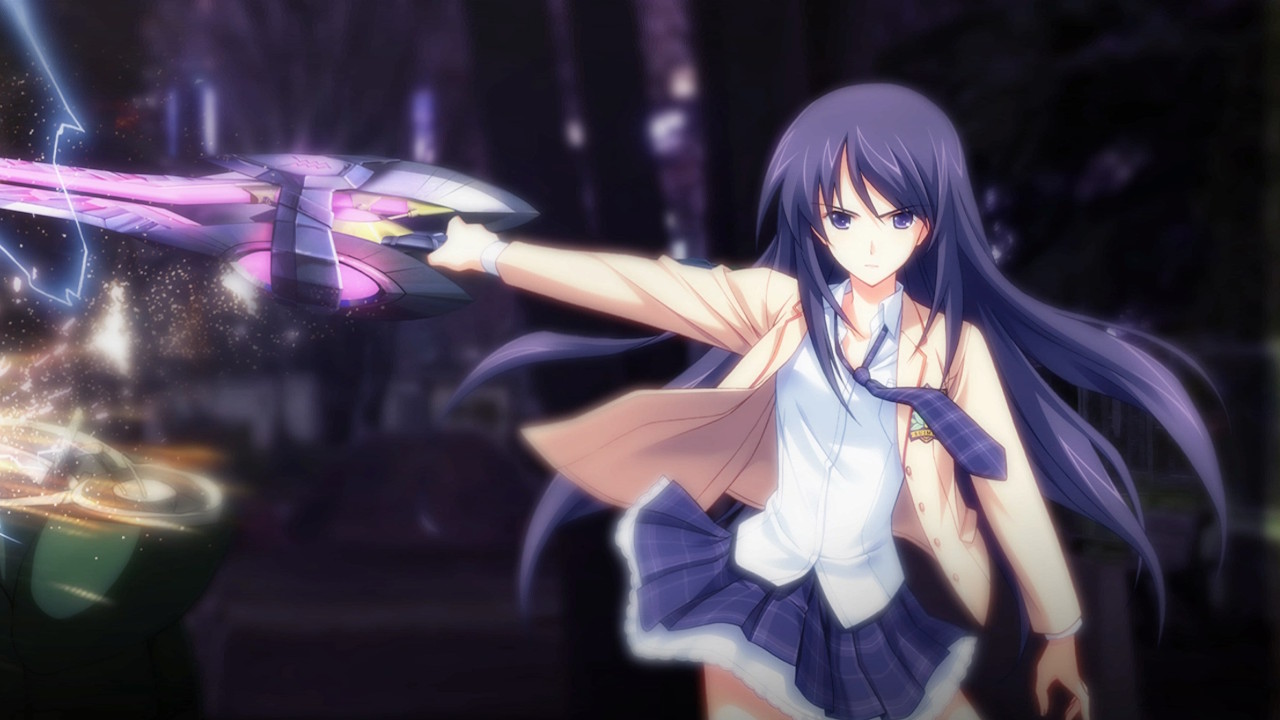
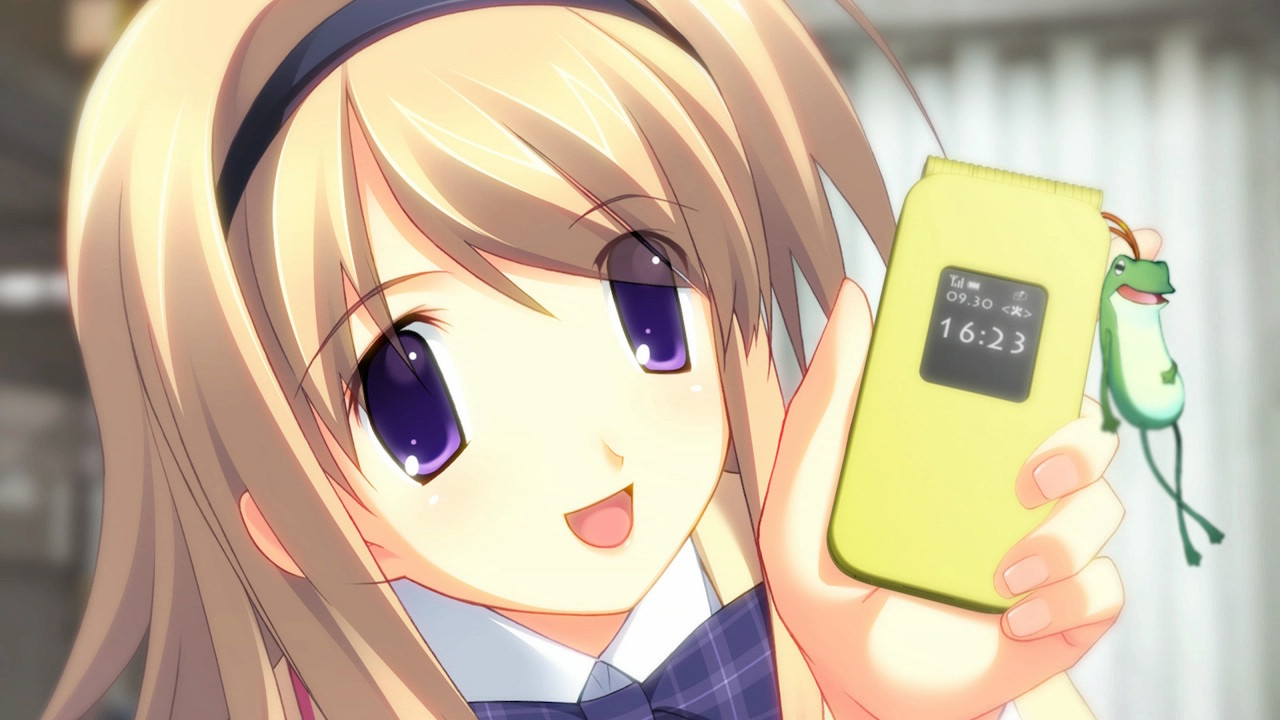
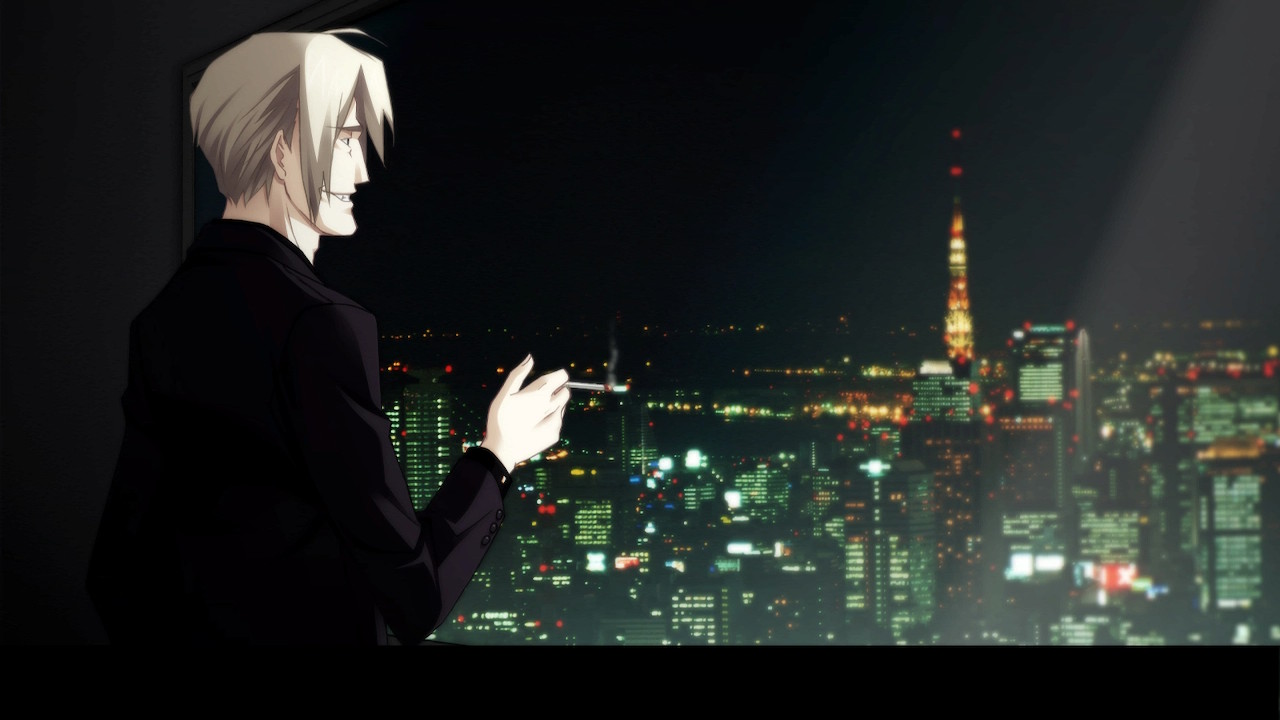
If there’s one criticism to be had here, it’s that the visual novel is starting to show its age in 2022. NoAH is typically 2D-centric in design, but you’ll occasionally catch 3D models being used as background characters, which can clash against the main characters’ sprites. There are fewer instances of these here than in the original 2008 release, but it’s still noticeable.
In terms of UI, NoAH can be a bit plain, but this isn’t necessarily a detriment: it’s functional, and it’s thematically designed around a classic era. The issues lie moreso with UI elements that have been updated in the Switch release, such as the glossary; there’s a smoother feel to them, one that feels too sleek and modern in contrast.
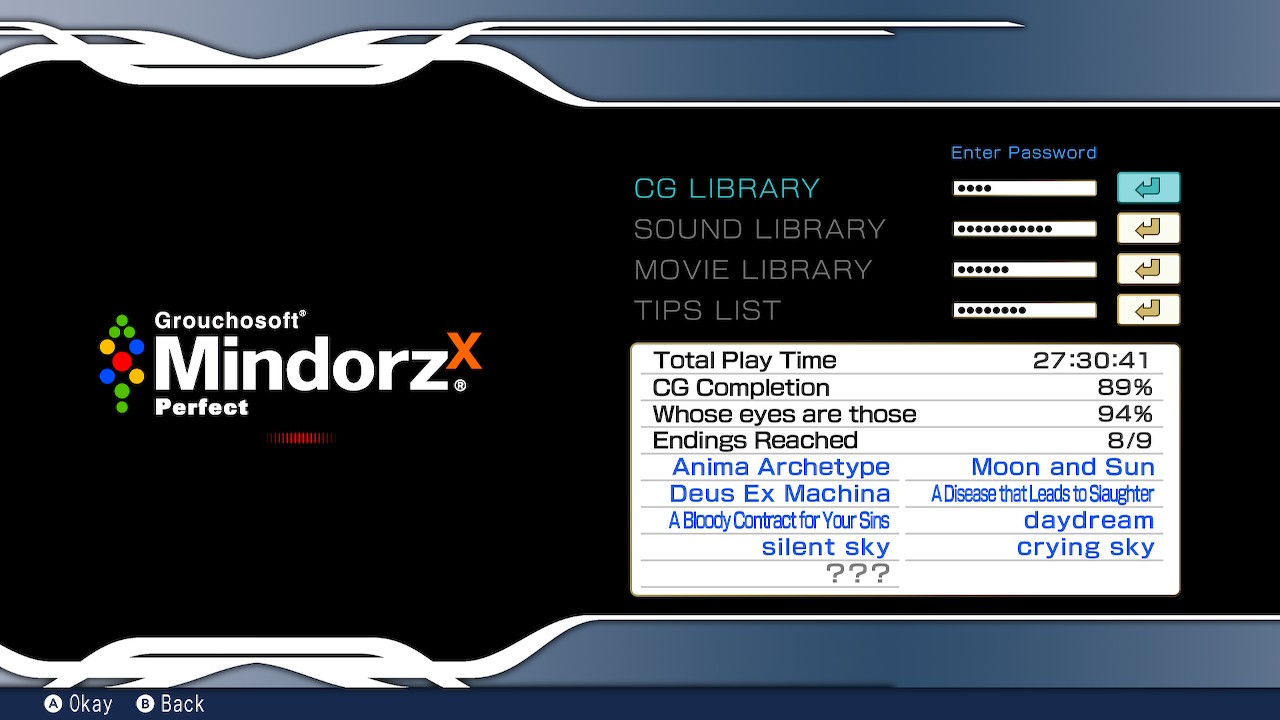
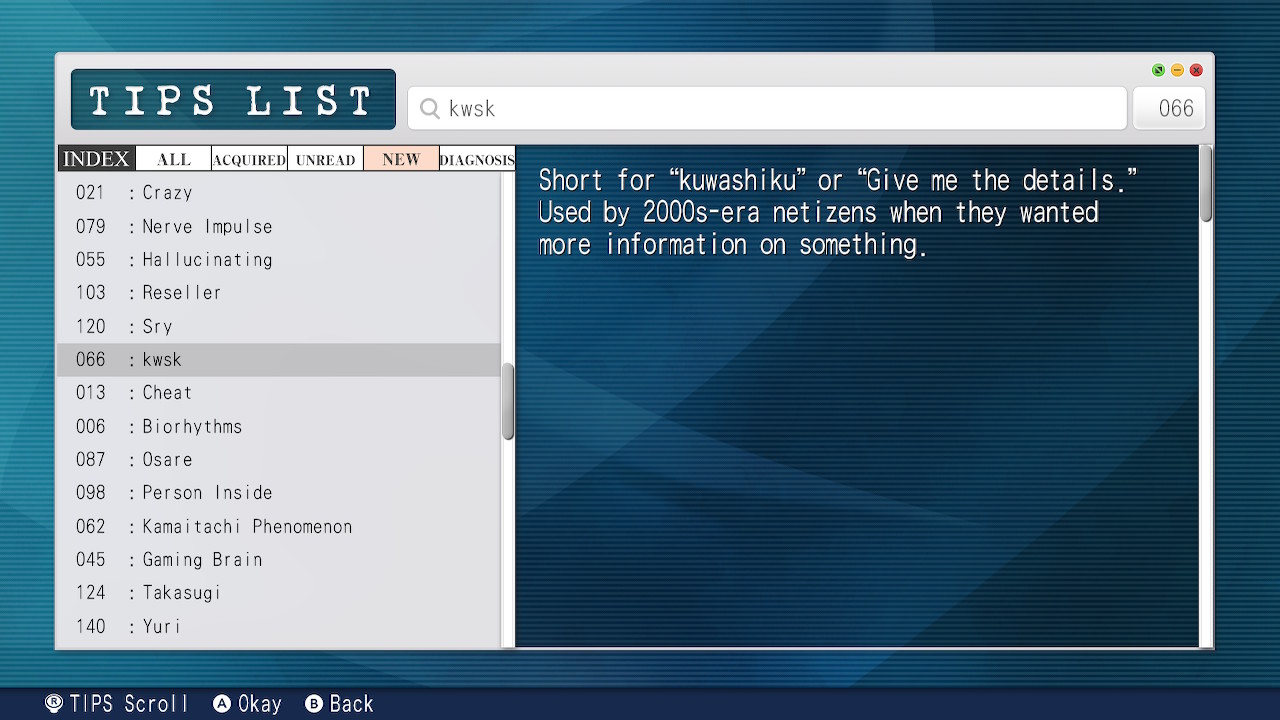
Please your ears
Music-wise, NoAH brings to the table a wide range of excellent tracks: they can be pleasant, atmospheric, or terrifying, but most of all, they are memorable. Series veteran Takeshi Abo composed much of the soundtrack for this entry—you can really feel the charming atmosphere in his compositions that also defined much of his older discography. Abo is additionally joined by composers Toshimichi Isoe, Shintarou Jinbo, and Yoh Ohyama—they’ve got their own excellently crafted tracks that fit NoAH to a T.
With its variety of insert songs, opening songs, and ending songs sung by Kanako Itou and the game’s heroines, NoAH possesses the widest range of in-game vocal tracks of the series. There’s truly a wealth here to be enjoyed.
As an aside, the (somewhat incomplete) OST recently hit Spotify! Do note that the thumbnail contains a spoiler.
Skipping pains
In order to experience every route NoAH has to offer, the game requires the player to go through the common route multiple times so as to branch into new paths. This can be somewhat tedious, but it is helped by an in-game skip function, which allows the player to fast-forward through text they’ve already read.
In previous NoAH releases, the skip function was helpful and worked like a charm. But the new Nintendo Switch release, in both Japanese and English, has its own unique problem: for some reason, the function will at random—but not infrequent—intervals pause itself, requiring the player to press the button to re-engage it multiple times throughout the process.
Skipping can already be a pain, given it takes several minutes to get to the new content being sought; this makes things a bit more inconvenient.
Not the whole story
If you’ve been following this release, chances are you already know about the censored content: that is to say, portions of two of NoAH’s routes—and scattered lines elsewhere—were cut from the Japanese Switch release, perhaps due to their extreme subject matter. The English localization, being based off of that edition of the game, unfortunately has little choice but to share in that lost content.
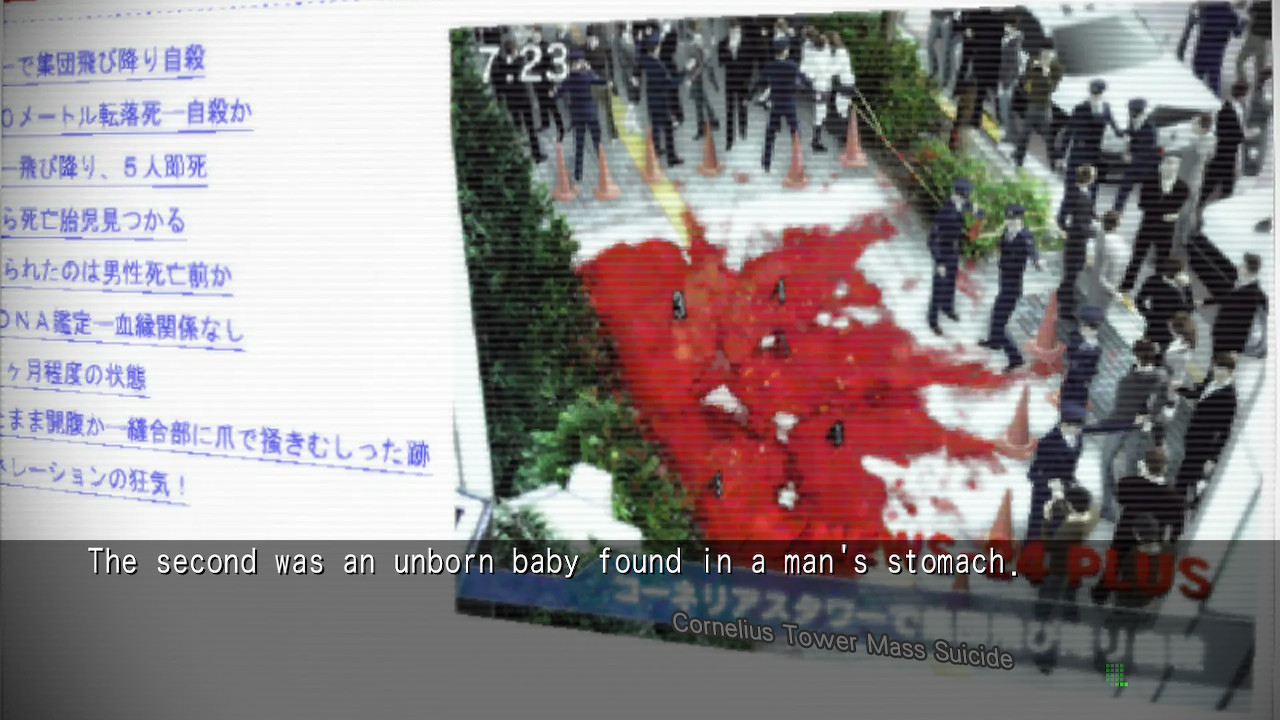
These cuts are both puzzling and unfortunate. By all rights, it seems as though there was no reason for the Switch release to be censored in Japan, given that it shares a strict CERO Z rating with the previous, uncensored Xbox 360 and Vita versions of NoAH. Perhaps the cuts reflect a change in rating standards?
At any rate, the omissions are unfortunate. They didn’t just add to the horrifically gripping atmosphere of the game; they also held somewhat crucial story context key to solving the game’s mysteries.
Granted, if this were the biggest issue NoAH’s English edition faced, perhaps I wouldn’t have qualms about recommending it. Certainly, it’s a significant loss, but not one I would call wholly experience-breaking. Unfortunately, NoAH’s English release bears much greater problems—ones that ultimately overshadow these comparatively trifling concerns.
Chaos;Head NoAH is a masterpiece hindered by an unsatisfactory localization
I wish I could say I had good news to share here, but… NoAH’s English localization sadly isn’t looking too good.
Chaos;Head NoAH is a great visual novel. It’s arguably one of the best on the market, if you ask me. But sadly, I’ve found during my time with the English release a wide range of localization issues that mire the product entirely. These issues, which range from minorly inconvenient to majorly disruptive, add up—and altogether, they leave the release particularly difficult to recommend, even in spite of NoAH’s utter significance.
I must stress, before I get into the details, that none of the criticisms presented below should be taken as criticisms of those who put the work into localizing this title. There are many, many unpredictable factors that can hurt a localized release: untenable localization timeframes, unreasonable mandates, low budget, poor pay, lack of relevant context—the list goes on. This release, to be frank, is not in good shape; but the reasons behind its failures are not clear, and to that end, I hold that the benefit of doubt should be employed in considering them.
You don’t know you need ‘em till they’re gone
Perhaps the most baffling and immediately noticeable omission from NoAH is that of quotation marks. That’s right: all instances of spoken dialogue in this release lack visual indication that, well, they’re being spoken.
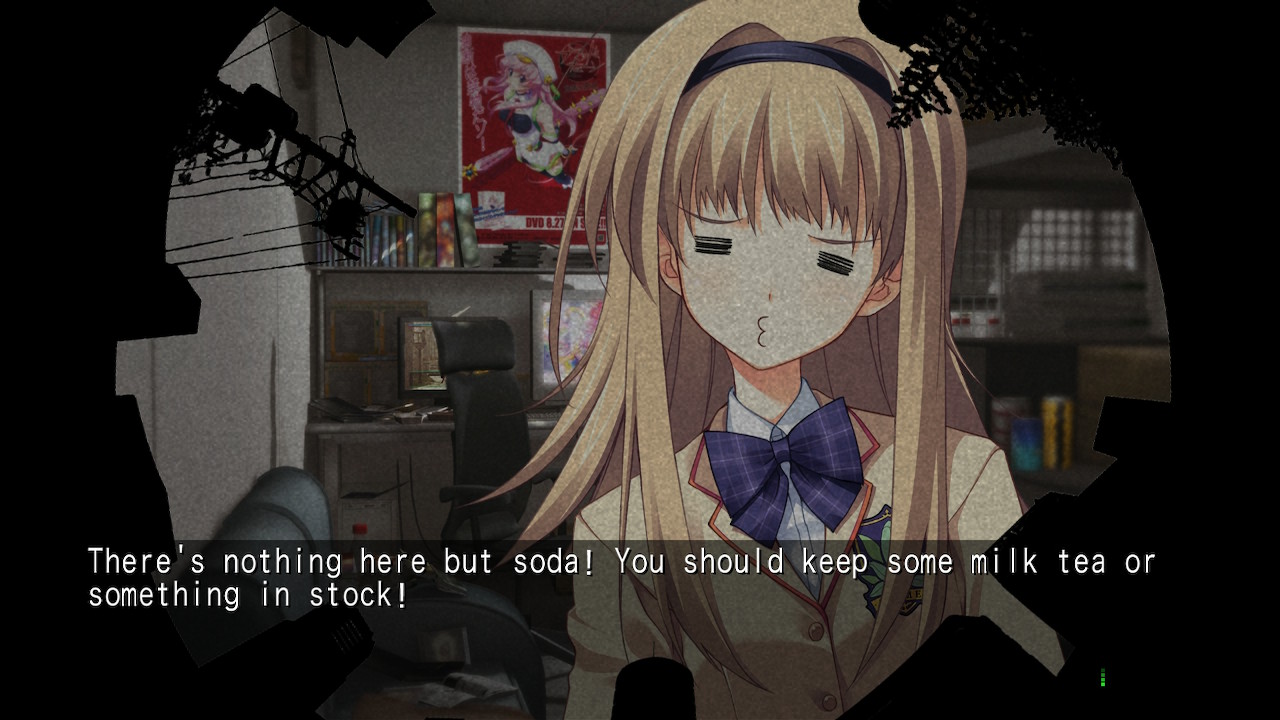
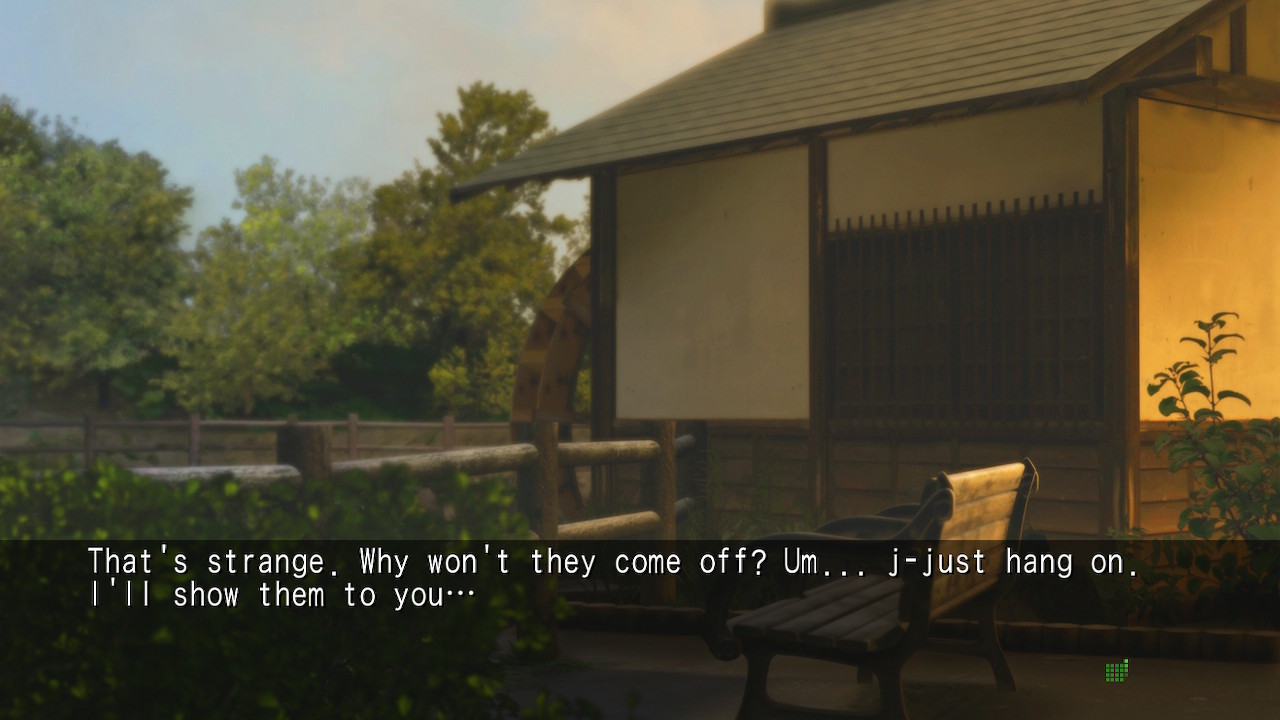
I struggle to understand why this glaringly obvious issue made it into the final release. There is no basis for this omission in the Japanese release, which itself uses quotation marks to distinguish between dialogue and narration.
This loss hurts the quality of the reading experience at every turn. There’s often a mental disconnect felt when, after a long string of unvoiced narration, Takumi continues his thoughts with a spoken line; or perhaps when a character interrupts his thoughts, but isn’t yet on the screen.
Because there’s no distinction between narration lines and spoken lines, there’s no distinguishing between the two beyond listening for if a character speaks. You probably shouldn’t be playing this game without sound anyway, but if you are… good luck.
Can you get used to this? Yes, probably. I just don’t think the reader should have to. It’s a vaguely uncomfortable accommodation to have to constantly make—one that consistently pervades the lengthy adventure.
Writing troubles
It goes without saying, but how enjoyable a work of fiction is is often correlated with how well it’s written—and NoAH’s localization has more than a few issues in this department. While certainly enjoyable to some extent, the game nonetheless suffers from stiff localization writing and numerous moments of awkward phrasing.
That’s not to say that the game is overall incomprehensible—but you’re going to come across more than your fair share of odd, head-scratcher lines that either don’t quite flow right, don’t read particularly well, or don’t make much sense in context. This problem doesn’t affect every scene, but it’s prominent enough to be cause for concern.
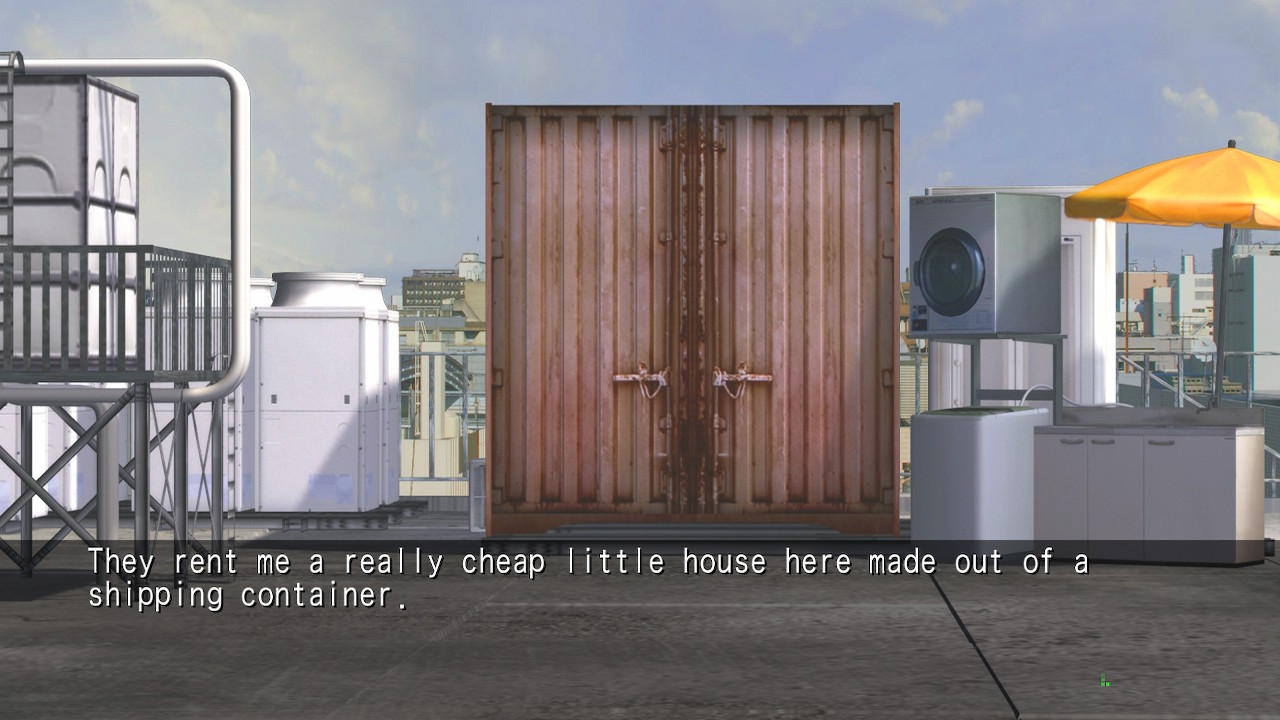
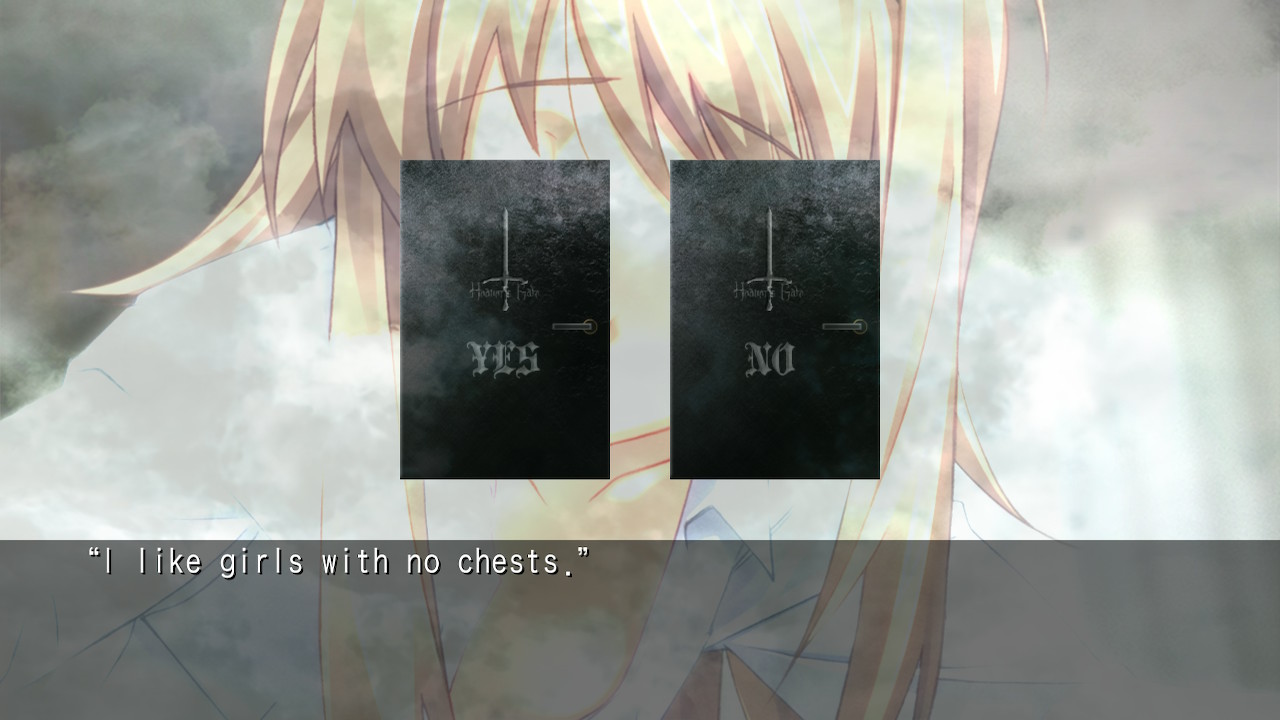
Arguably the biggest and most concerning problem, however, lies with the game’s egregious mistranslations. Too often, the English script fails to properly reflect the meaning of the original Japanese writing and the details constructing it. For a translation that leans awfully close to the original script’s structure—often at the cost of pleasant, natural writing—this issue is particularly distressing.
To be frank, these errors occur too frequently to be brushed aside. This is a localization that is constantly at odds with its source material; in too many scenes, the script will, for one reason or another, accidentally mislead the unsuspecting reader. It may misconstrue what’s happening story-wise, what ideas are being conveyed by the script, what motivations drive the characters, and so on. And honestly, I don’t feel an English localization that fails on this many levels is tenable. It’s an affront to the care that was put into the original script.
Tense times
Although NoAH is generally narrated in the past tense, it often struggles to maintain that standard. The result is a script that, at times, will slip into the present tense—sometimes with good intentions, but often, for no discernible reason.
The reader will also come across several instances of lines that ought to be written in past perfect tense—i.e., to indicate an event occurred prior to the current narration—but are instead left in the past tense. This, naturally, can result in confusion; the reader will wonder, even if only briefly, if a described event is currently happening, or has actually happened prior to the scene.
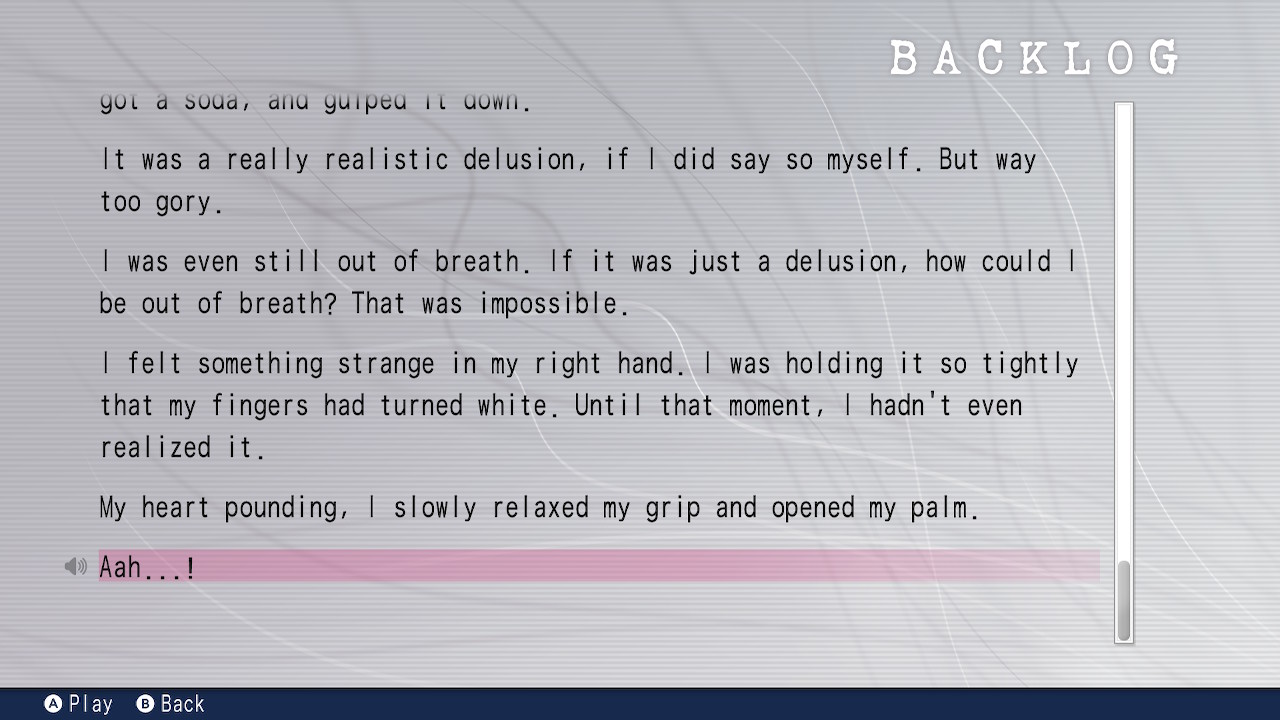
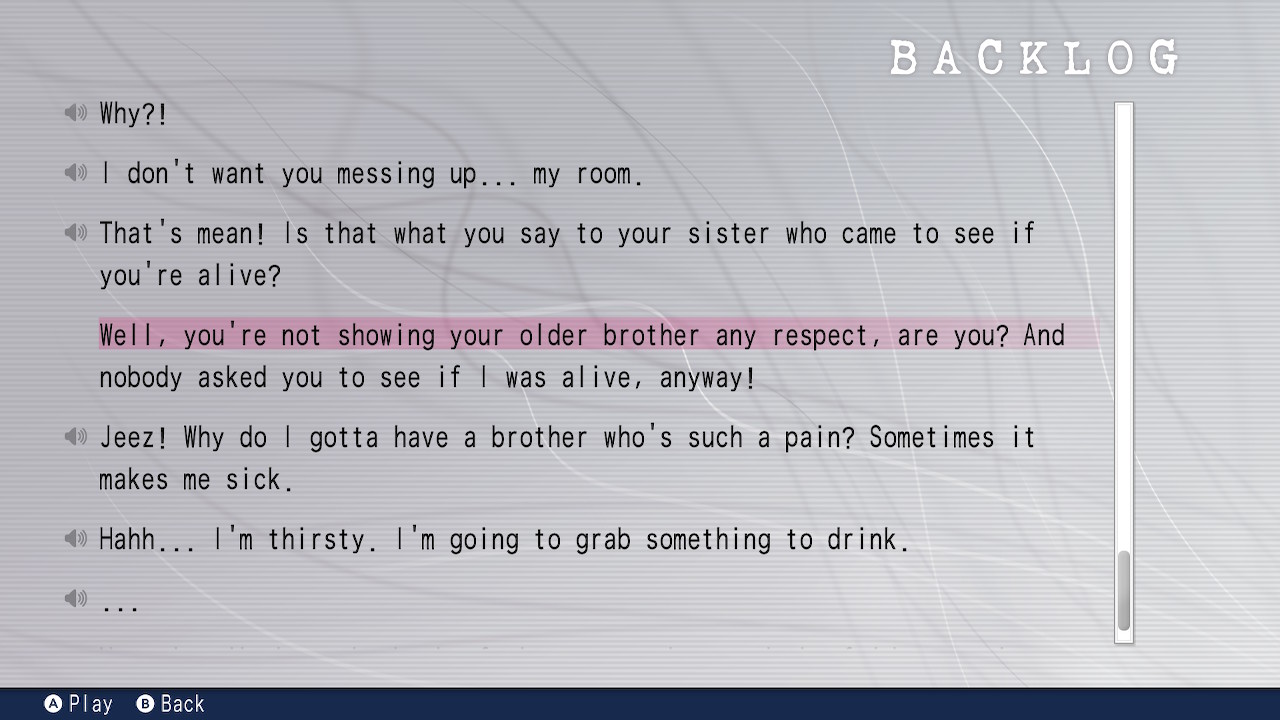
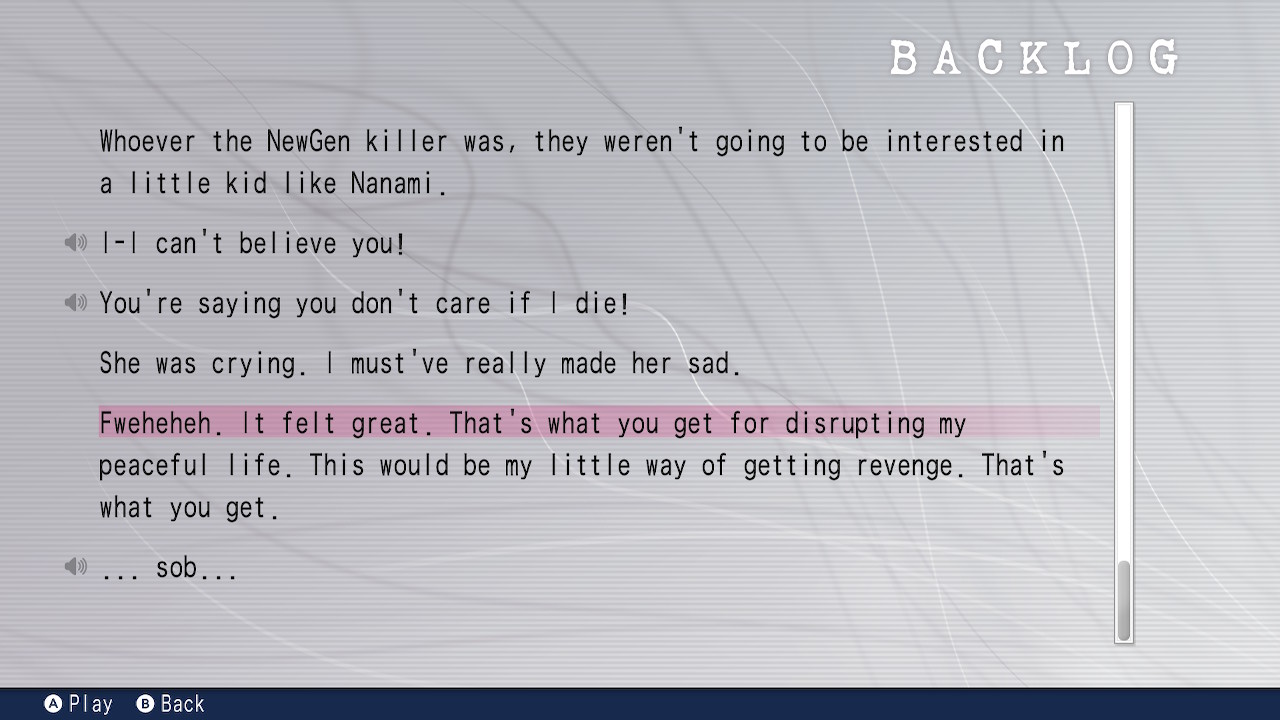
Combined, these tense inconsistencies result in an experience that quite often feels disjointed and difficult to follow. Not the best look, given this is a story-heavy visual novel with numerous events to keep track of.
They’re more than their words
I find it particularly disappointing how frequently this translation fails to do justice to character voice.
Every character has their unique personality. If you’ve played Chaos;Head before, you’ll know that Misumi is the cocky, overconfident playboy; that Takumi’s sister Nanami can be annoyingly persistent, but charmingly lively and caring; that Detective Ban is laid-back, easygoing, and a wisecracker.
The trouble with character voice in this release is in how uninspired it can feel: rather than put care into how the characters speak, too often, the localization conveys only what they’re saying—with hopes that that will suffice in bringing the characters to life. Of course, it’s not nearly that simple.
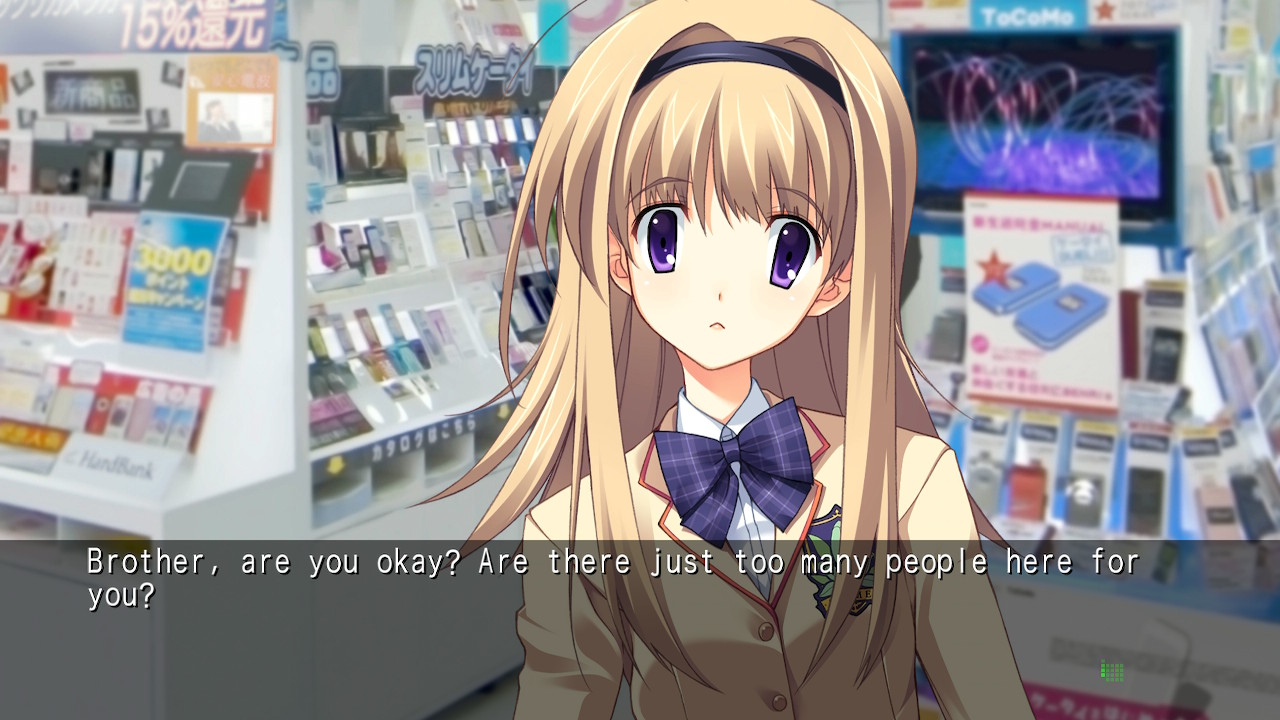
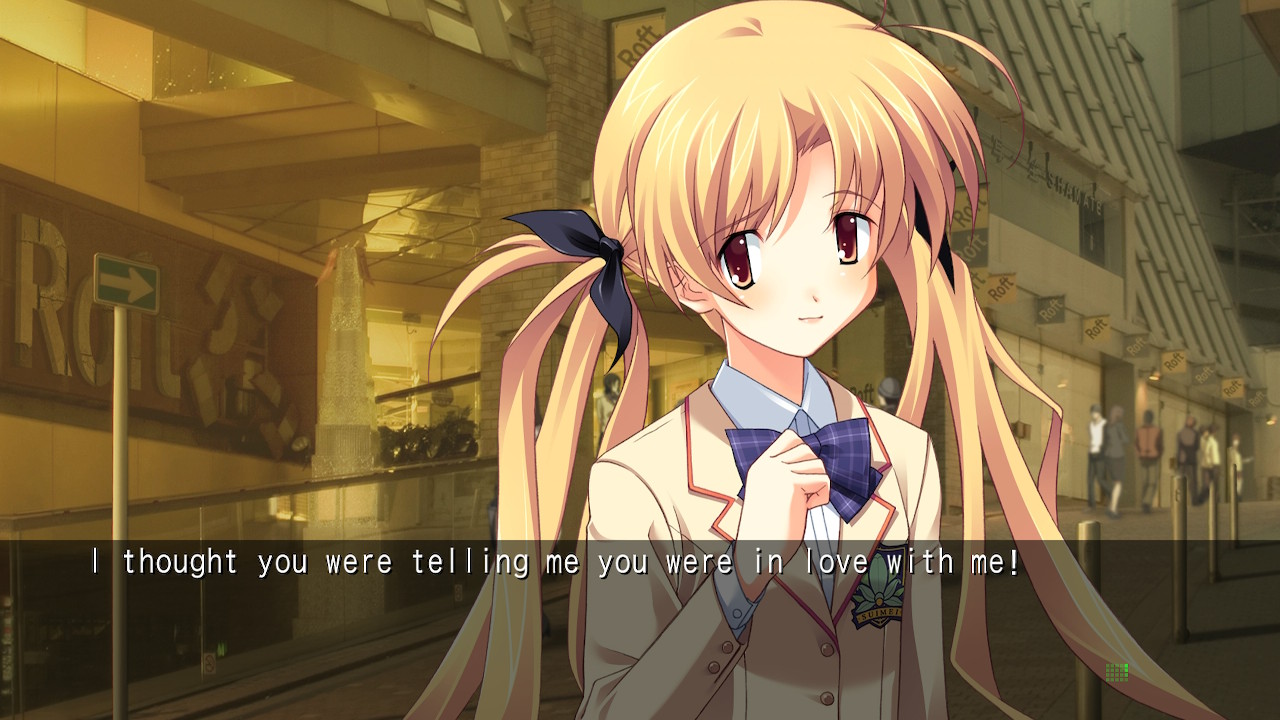
Some scenes go better, and some have it worse. You usually won’t have much trouble understanding what characters are actually saying—though of course, mistranslations are still an issue—but it’s often the how that suffers. And for a work of fiction that otherwise can pride itself on its excellent cast, this is a flaw pervading and unacceptable.
Hard to picture
The anime-subtitle effect from Robotics;Notes Elite’s localization is back, and sadly, in even worse shape than before. My stance on this approach to CG translation is unchanged: it’s lazy. It creates a meta-dissonance that drags the reader out of their immersion with the story, unnecessarily reminding them that they’re reading a translation—when really, they ought to be fully engrossed in the story.
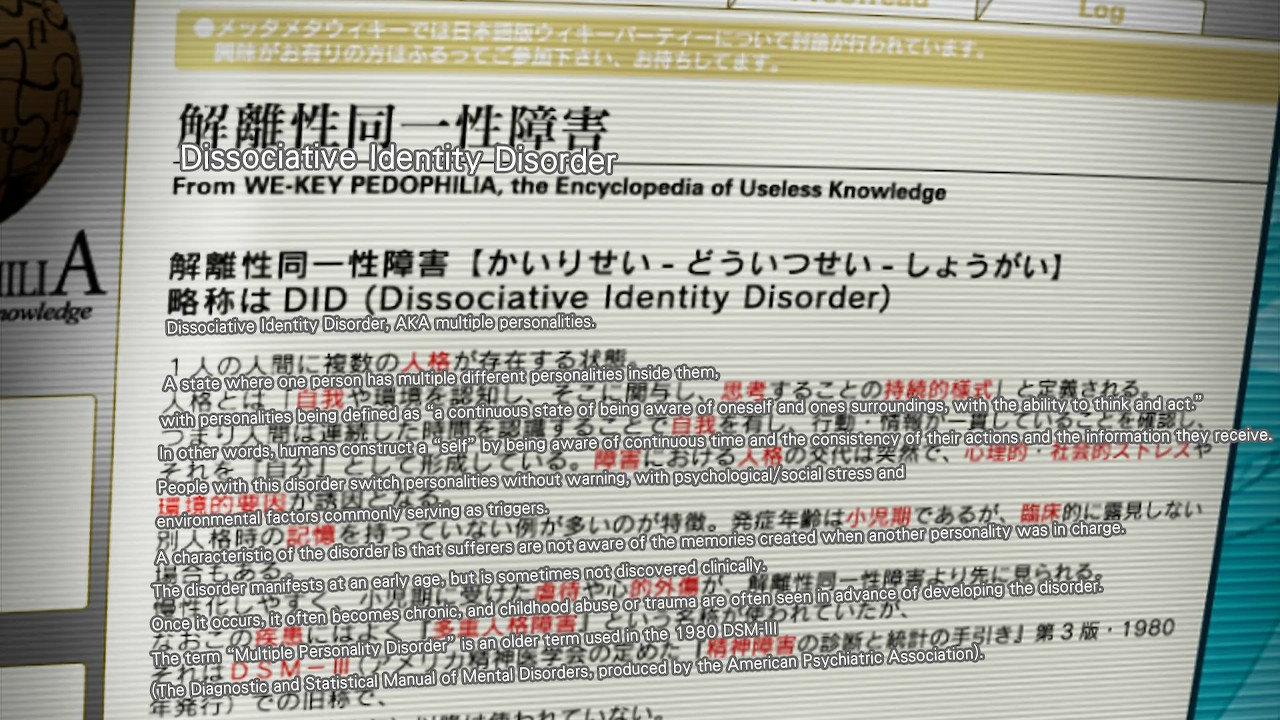
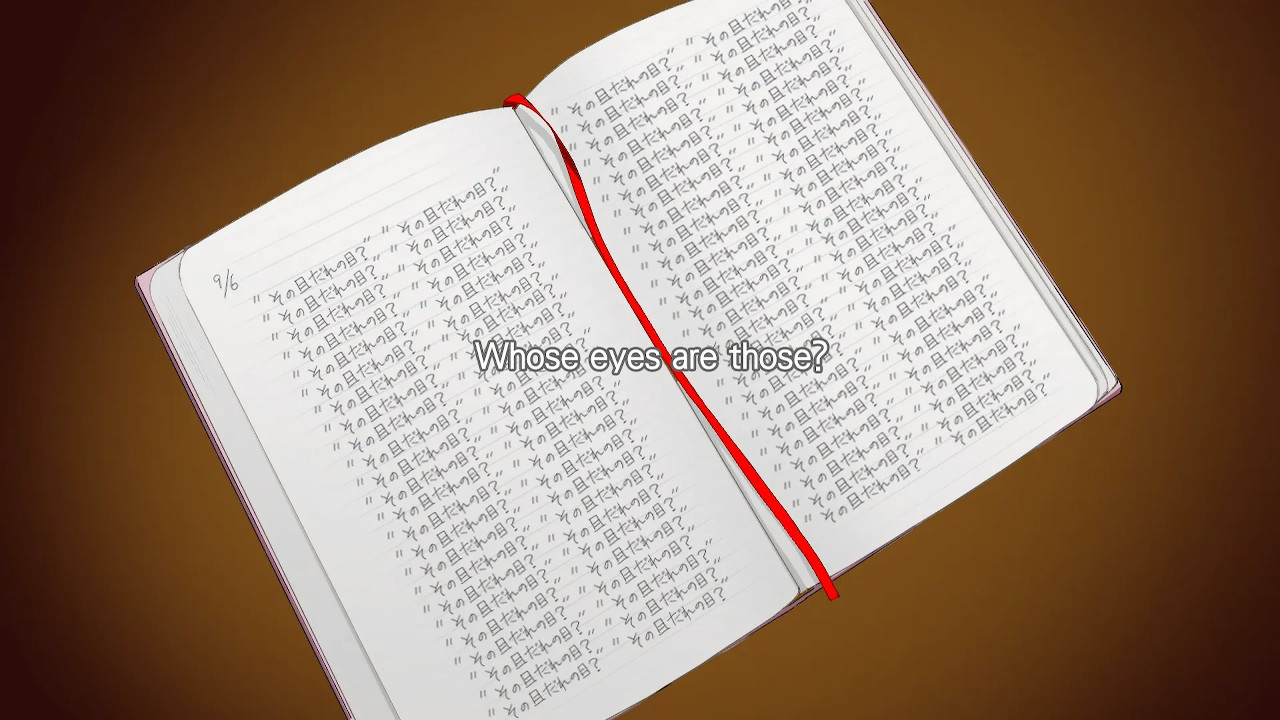
The ideal scenario would have involved the Japanese text being cleaned out of the original images and the English text drawn into them—as though the images had been produced with English text to begin with. This was even the standard with Steins;Gate’s and Chaos;Child’s localizations… but unfortunately, it seems that in recent years, far less attention has been paid toward smaller, but nonetheless critical quality-of-life features like these.
A poor soapbox
Chaos;Head NoAH features an in-game glossary that serves to define terminology and ideas that may be unfamiliar to the reader—e.g., internet shorthand, scientific terms, philosophical concepts, and so on.
Puzzlingly, NoAH’s localization includes a small handful of glossary entries that serve not as definitions, but glorified translation notes explaining why certain idiosyncrasies were not translated into English.
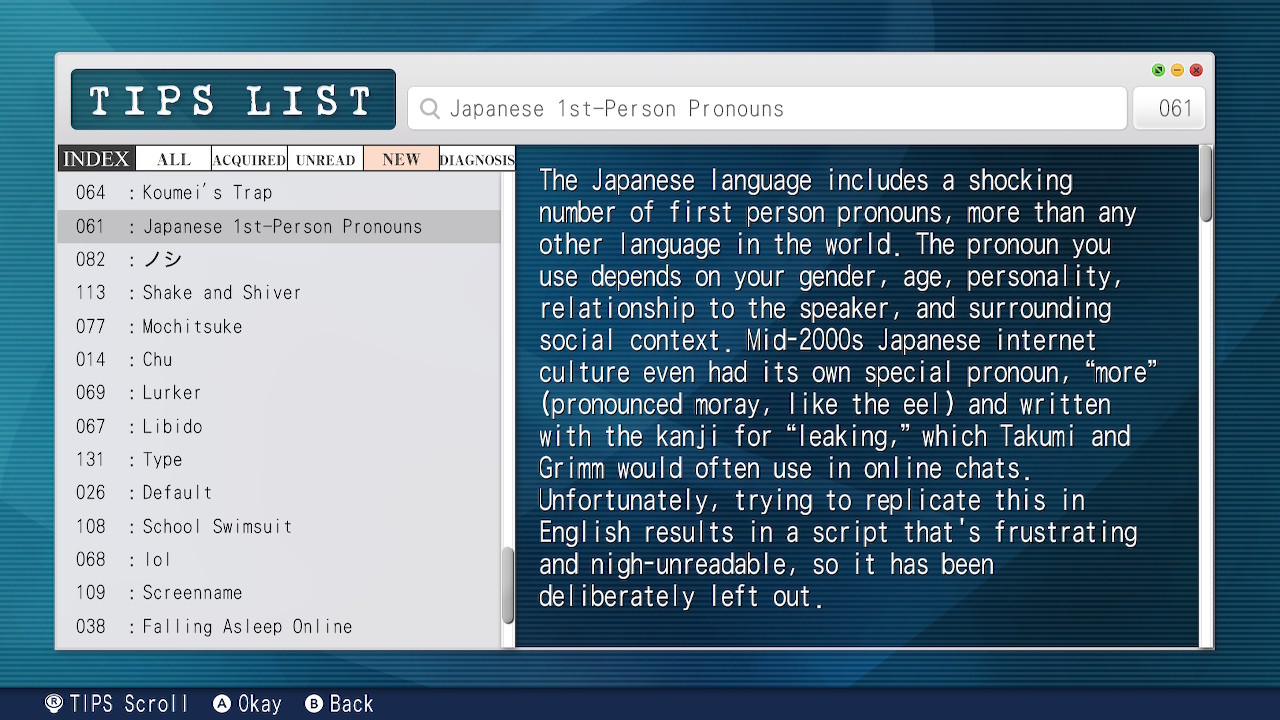
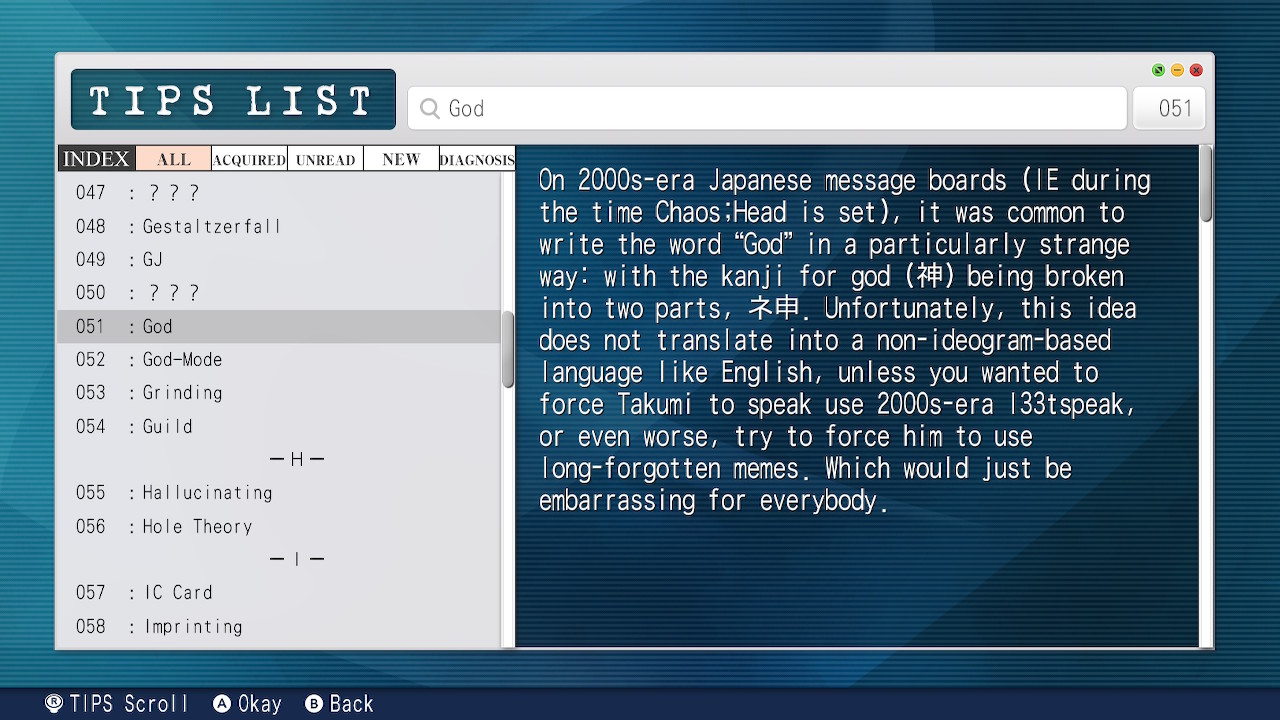
These entries are out of touch with the tone of others, and frankly, they’re unwarranted. Either find a looser, more creative solution to the problem—which is usually more than possible, given some thought—or drop the concept. No translation is going to perfectly encompass every quirk found in the original language, but to unnecessarily call attention to this inability—and through a misappropriated function of the game, no less—only makes matters worse.
Credit where it’s due
NoAH’s long list of credits is unfortunately untranslated. Should an English reader want to know who in particular contributed to the release—and there were very many staff involved with the project—they will have to look to external sources for answers, because for the most part, it’s all in Japanese.
Oddly, there is a short list of English credits included at the end of each credits roll; these correspond specifically to the localization. I can’t help but wonder why only partial effort could be spared here. Surely, those involved with the creation of this massively ambitious visual novel would like to be known for it.
Words in the wind
Remember how I mentioned that NoAH features the widest collection of vocal tracks of any SciADV title? Well, if you want to know what the vocalists are actually singing, good luck—because none of the songs are subtitled into English.
Now, admittedly subtitled songs haven’t really been the norm with most SciADV localizations. But the loss is especially devastating here, given the 10+ songs that are present—songs that are otherwise a joy to experience, given how they enhance the game’s striking themes and general plot.
All I see is inconsistency
Longtime readers may recall that, in our 2020 Robotics;Notes Elite review, we called attention to the localization’s inconsistent handling of terminology established in prior SciADV localizations. I regret to note that in NoAH, these inconsistencies have only worsened.
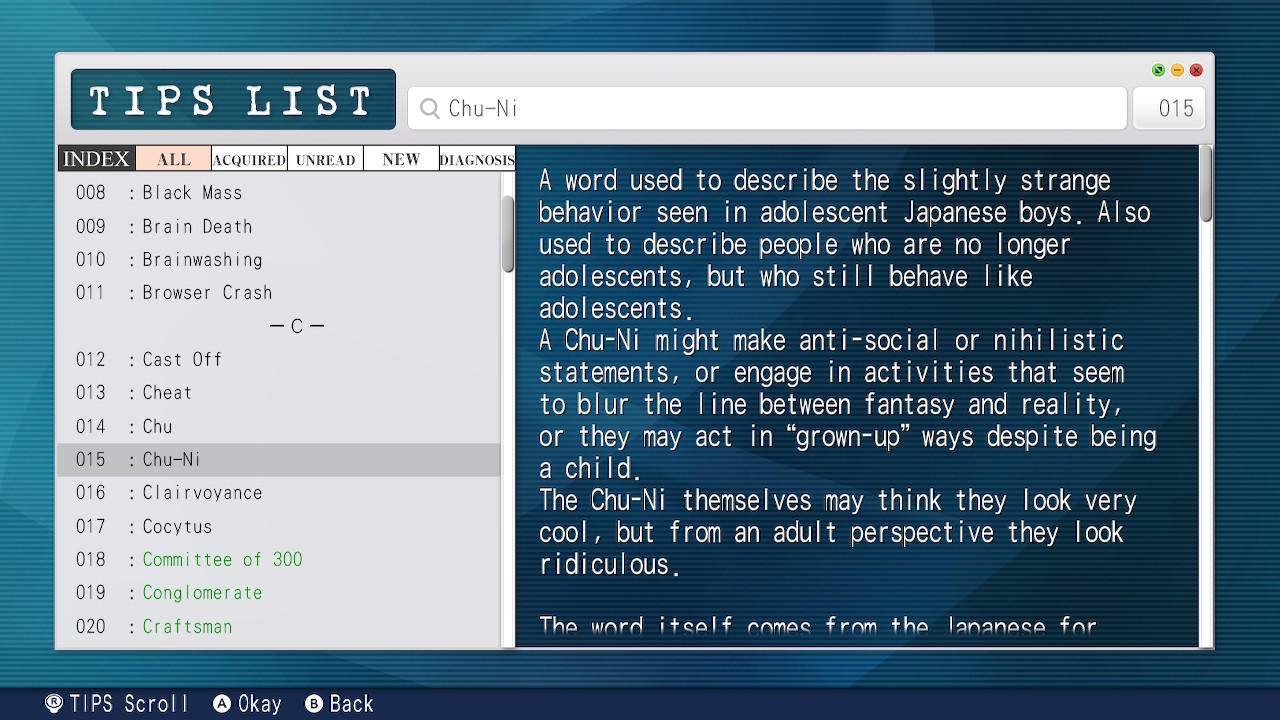
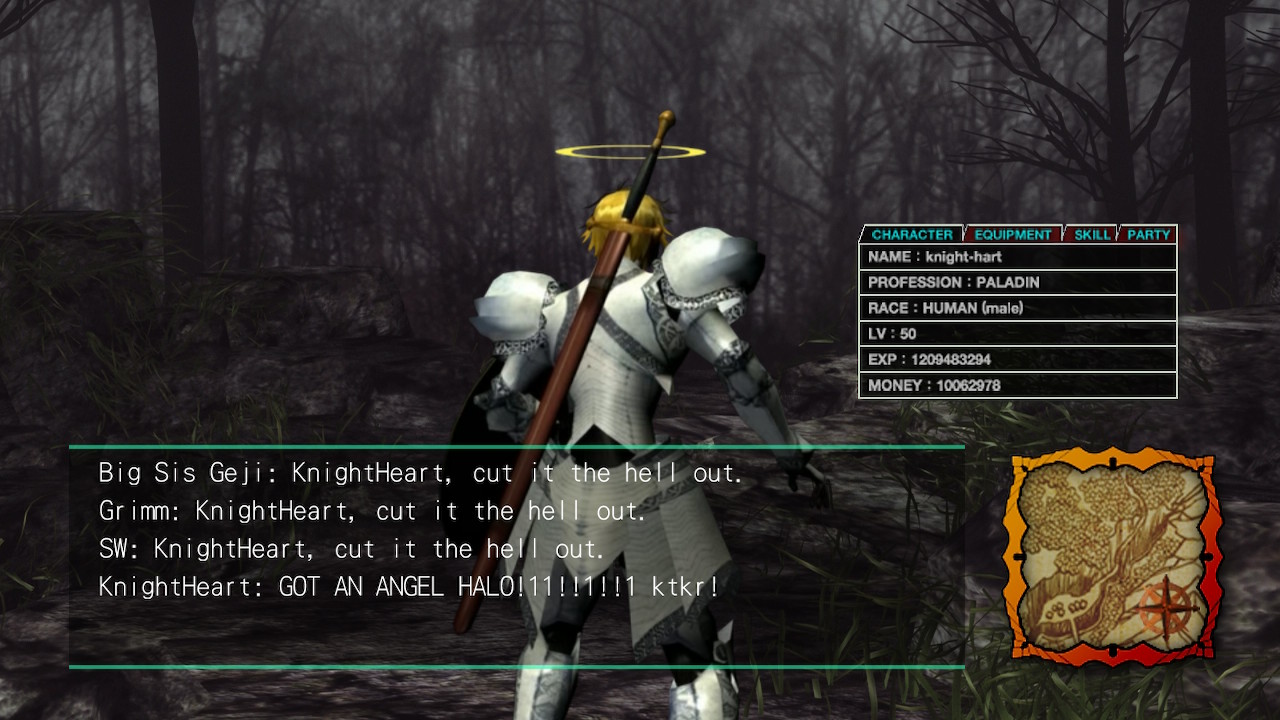
To be perfectly honest, it’s frustrating to see the first entry in the series take so few cues from the localizations of the entries after it. Translations of the many of the recurring bits of slang, phrases, character titles, anime and manga references, and so on have already been agonized over and established—and yet, NoAH’s localization goes off on its own, creating its own awkward, questionable English equivalents.
Why does this localization settle for the romanized “Ria-Ju” when the familiar, previously established equivalent “normie” already exists? Why has this localization invented a third translation for the name of one of Takumi’s guildmates—which, in Japanese, has never once changed? Why is the series’ most iconic phrase translated inconsistently between Chaos;Head NoAH and Chaos;Child? Need I mention that both games are bundled together in the physical release?
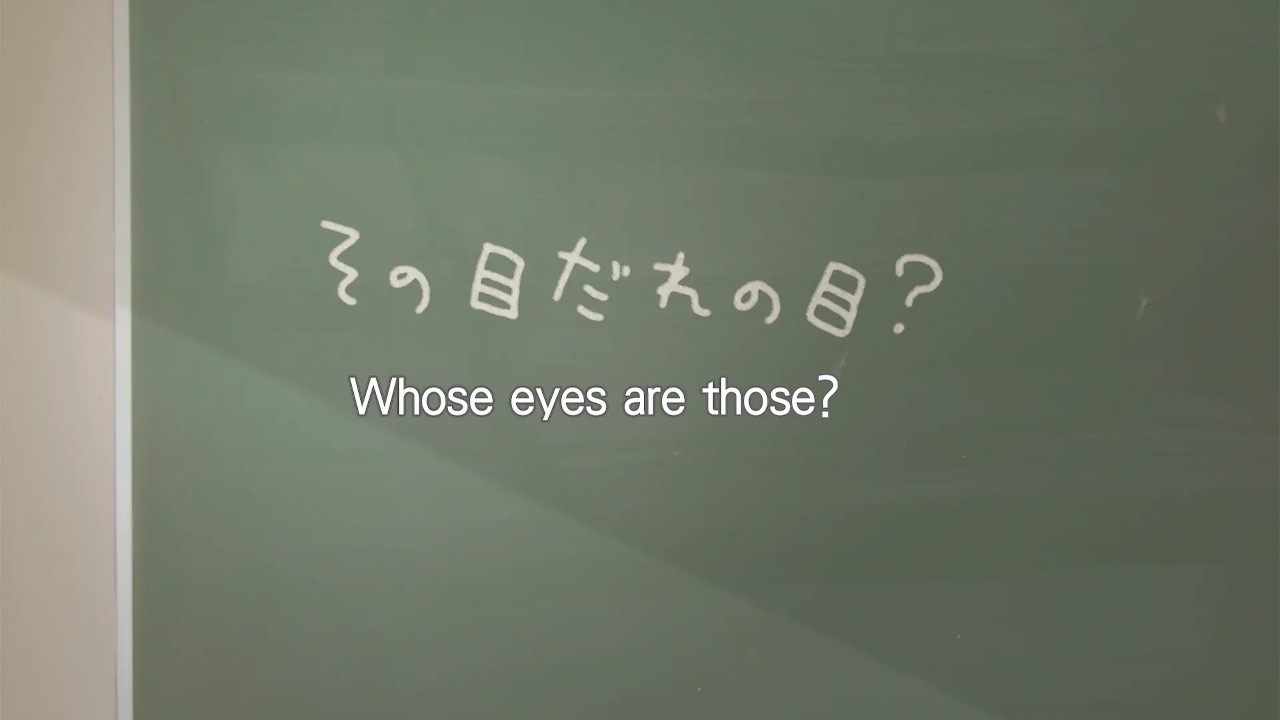

And really, that’s only the first layer of problems here. We’ve learned through Anonymous;Code’s Japanese release this year that several phrases and concepts introduced in NoAH are supremely relevant to SciADV’s latest entry (and the rest of the series, really). Yet, scenes featuring those ideas are either muddled or mistranslated in NoAH’s localization—which is only going to make it harder for English readers to discover these crucial intersections.
Perhaps most frustratingly, NoAH’s localization is inconsistent with itself. I encountered, more times than I cared to count, instances where names, terminology, and recurring phrases were rendered differently across different scenes—you know, the sorts of errors that should have been caught in a QA pass.
At other times, descriptions provided in written narration are noticeably at odds with the actual imagery on the scene—e.g., a visual of a cloudy blue sky being called “gray,” an error not present in the Japanese game.


As another example, NoAH’s localization opts to drop Japanese honorifics (-san, -chan, -sama, etc.) Except this is also handled inconsistently, because the localization still has Takumi calling his favorite anime character “Seira-tan” anyway.
These inconsistencies alone leave me reluctant to recommend this release. They’re not all experience-breakingly bad, but the vast majority of them should not exist to begin with, frankly. NoAH may be the perfect entry point to the Science Adventure series, but it is bogged down by its localization’s unwillingness to align itself with other localized entries. The result is a product that is distinctly awkward, disjointed, and disappointing.
This game can’t be beat... literally
EDIT: This bug has since been addressed in an update. Ensure you are running the latest version of the game to avoid encountering it.
A bug present in the current build of the game, inconveniently found at the very tail end of the true ending, prevents the player from actually completing the game. The bug in question is exclusive to the Western release—it seemingly fails to load the related ending video at the end of the game, resulting in a softlock past which the player cannot proceed.
We have communicated this issue to Spike Chunsoft, Inc., and it is our understanding that it’s being looked into. Even so, it’s highly disappointing to realize that a bug of this caliber made it through the localization process—and it’s unclear if the bug in question will be resolved in time for the game’s release. Of all problems, this is perhaps the most fitting reflection of the fact that NoAH’s English release is nowhere close to being in the condition it should be.
Sloppy. That’s the word that comes to mind as I reflect on this release. I wish I had more positive things to say about this localization, but sadly, little comes to mind. At best, what I can concede is that when its issues aren’t front and center, NoAH is still a gripping read. If you do decide to pick up this release, you’ll at least come away from it with the broad strokes of what NoAH tries to be.
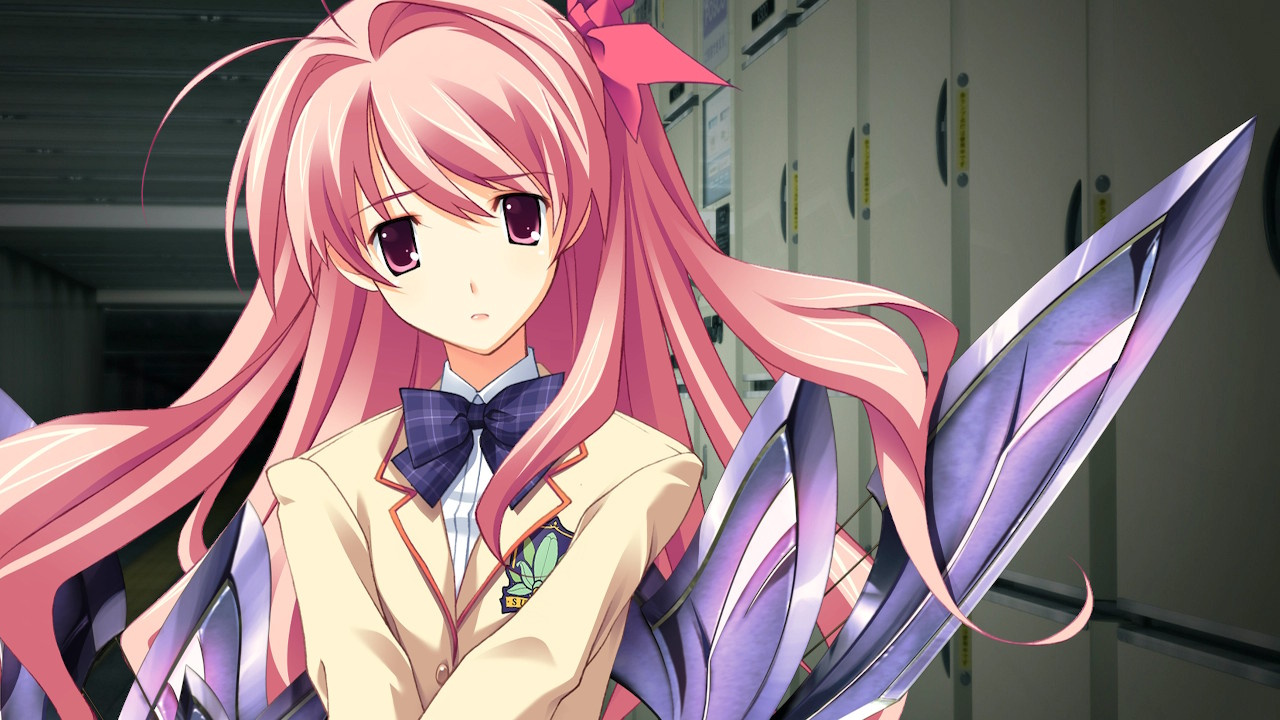
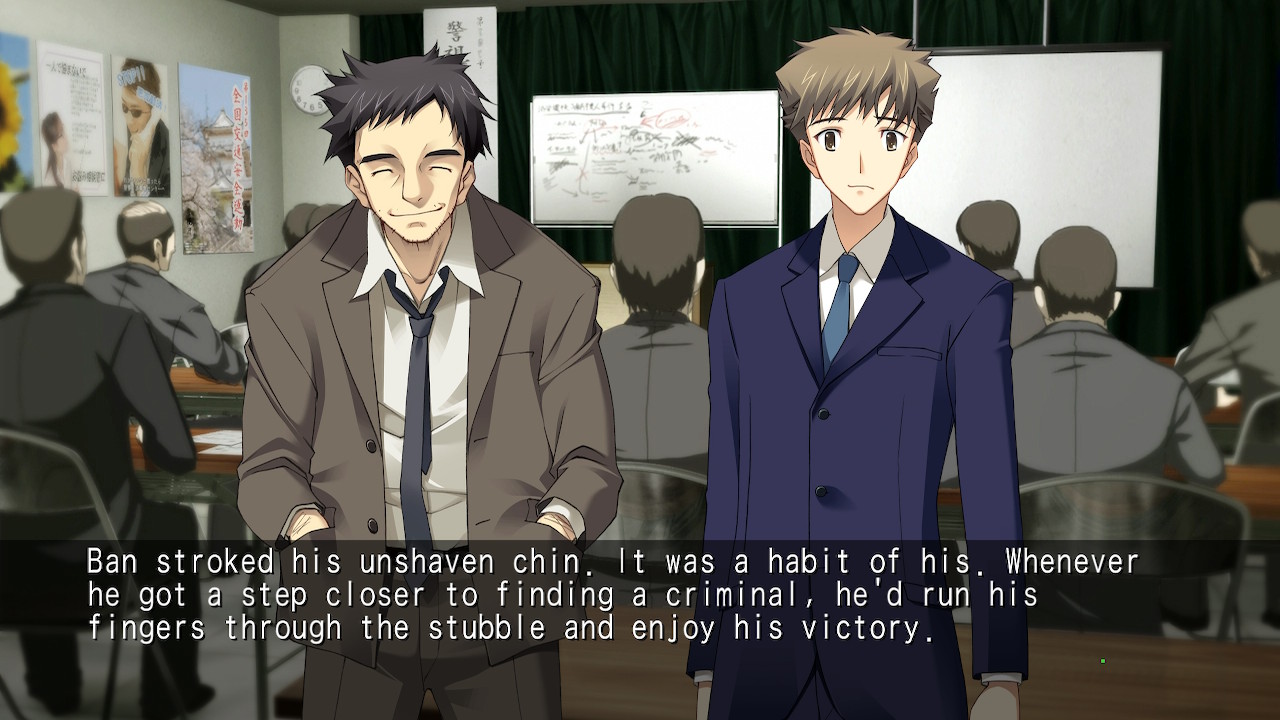
I just wish a bit more effort was put into it. NoAH in Japanese is a gracefully crafted visual novel, its flaws few and far in between. It’s filled to brimming with evident love and care, and serves as the perfect gateway into the larger series that follows it. In absence of all issues introduced by the English release, I feel I could easily give the game a perfect score.
But as it stands, NoAH’s official localization is in pitiful condition—and while it seems all but certain that fans will swoop in to fix these issues as they usually do, the fact remains that this release, like Robotics;Notes before it, is a fundamental disappointment.
Chaos;Head NoAH deserves better. This release sadly lies a shade of the original work’s beauty; a fragmented product I simply cannot recommend.
5/10
Chaos;Head NoAH is one of the strongest entries in the Science Adventure series—if not its absolute pinnacle. However, its many merits are sadly hindered by an egregious localization plagued with messy problems. Unless these issues are amended, this release will unfortunately remain a particularly difficult recommendation to make.
The CHAOS; DOUBLE PACK will launch on Nintendo Switch this October 7 in North America and Europe. Physical preorders, which include a regular edition and an exclusive SteelBook edition, are currently available through various retailers; digital eShop preorders are available for CHAOS;HEAD NOAH and CHAOS;CHILD at a 10% discount.
To learn more about this upcoming release, be sure to check out the CHAOS; DOUBLE PACK official website.
